Day 1 :
Keynote Forum
Cathy Rodgers Ward
UCLA Medical Center, Los Angeles, USA
Keynote: Small geographic nursing teams improve teamwork and patient outcomes
Time : 08:50-09:20

Biography:
Cathy Rodgers Ward, PhD, RN, NEA-BC is an experienced nurse executive and researcher and was most recently the Chief Nursing Officer for the past 18 years at the UCLA Medical Center in Los Angeles, California, designated three times as a Magnet facility. Dr. Ward also holds an appointment as clinical faculty in the UCLA School of Nursing. Her research has focused on the effects of nursing leadership on patient outcomes in hospitalized patients. Under Dr. Ward’s direction, UCLA achieved high patient satisfaction with overall quality of care ranking above the 90th percentile nationally and nurse satisfaction ranked above the 95th percentile. Dr. Ward has received many awards including the 2017 UCLA Leadership Award, 2015 Distinguished Alumni Award from the University of Alabama in Birmingham, the 2015 Transformational Leadership Award at UCLA, and the United States 2011 Nurseweek National Management Nurse of the Year.
Abstract:
Statement of the Problem: The implementation of healthcare reform requires new innovative nursing care models. Smaller work teams have been shown to increase teamwork in nursing. Smaller work teams provide for increased communication and accountability, closer supervision, better support for new staff, and increased knowledge of the patient condition. This study examines the effect of an innovative care team model using smaller, geographic work teams on patient outcomes, continuity of care and teamwork. Methods and Theoretical Orientation: This study was conducted on three hospital units in an academic medical center. Nurses in these units were divided into equal teams with equal bed counts. Nurses were assigned to one team and one geographic area only. Success of the model was assessed after one year including clinical outcomes, patient satisfaction, nurse continuity and nurse teamwork. Results: Nurse continuity improved in all units as evidenced by the average number of new RN encounters (including day and night shifts) decreased from 4.49 per patient to 3.94 per patient. The percent of team intactness was 87.4% indicating the model was successfully followed. Patient length of stay (LOS) in the hospital decreased across units by 14% therefore reducing overall costs. Patient satisfaction scores were variable across units. Satisfaction with nursing teamwork and nursing trust mean scores improved significantly (p=.04) across units. Conclusions and Significance: Developing smaller, more cohesive teams yields benefits of improved continuity of care for patients and improved patient outcomes. Improved continuity of care for patients may lead to safer care and improved engagement for nurses. Defining smaller work teams in a distinct geographic area is a model that shows promising results in developing teamwork among nurses and improving patient care.
Keynote Forum
Joanne P Robinson
Rutgers University, USA
Keynote: Findings from a decade of research on the lower urinary tract symptom experience in men with Parkinson’s disease and their spouse caregivers
Time : 09:20-09:50

Biography:
Joanne P. Robinson is a University Professor at Rutgers, The State University of New Jersey, USA. Dr. Robinson is known for her contributions to gerontological and urologic nursing. Her research on lower urinary tract symptoms in older adults has been supported by the USA’s National Institute of Nursing Research, recognized with six awards, and merited appointment to the board of the Center for Clinical Investigation of the Wound Ostomy and Continence Nursing Society (2011-2015). Currently, she chairs the Nursing Education Subcommittee of the International Continence Society. Dr. Robinson has been a Fellow of the American Academy of Nursing since 2011.
Abstract:
Problem Statement: Lower urinary tract symptoms (LUTS) are an important but often neglected issue in patients with Parkinson’s disease (PD). The purpose of this presentation is to highlight findings from a series of studies conducted over the past decade that expand evidence about the prevalence and impact of LUTS in male PD patients and their spouse caregivers. Theory and Methods: Guided by the Theory of Unpleasant Symptoms and family systems theory, four studies were conducted. All participants were recruited from the movement disorders clinic of a Veterans Affairs Medical Center. Study designs were: retrospective with total population sampling (N=271 clinic records); cross-sectional with convenience sampling (N=88 men with PD and LUTS); and qualitative descriptive with purposive sampling of cross-sectional study participants (N=11) and their spouses (N=15). Data from clinic records and interviews (structured and semi-structured) were analyzed using statistical procedures and content analysis (directed and conventional). Findings: Most patient participants had mild PD symptoms, yet UI prevalence was 24% and 92% in retrospective and cross-sectional studies respectively. Patients had limited awareness of the neurologic contributions of PD to LUTS. Embarrassment, bother, and diminished self-esteem jeopardized their relationships, intimacy, social life, and travel. Spouses understood that PD caused LUTS and empathized with their husbands; however, they still experienced bother and emotional distress related to LUTS and coped primarily by “dealing with it.” Patients and spouses relied mostly on do-it-yourself strategies to manage LUTS – some ingenious and some ill-advised. Conclusions: LUTS may be highly prevalent in the early symptomatic phase of PD, negatively affects patients and families, and often escapes the attention of providers. We recommend: screening patients and families for LUTS issues in all stages of PD; inquiring about burden and management strategies; and referring to urology providers as needed. LUTS treatment deserves designation as a priority area for PD research.
Keynote Forum
Anthony DeNino
CORe – Creating Our Reality, Inc., USA
Keynote: Utilizing positive psychology and kaizen in today’s healthcare setting
Time : 09:00-09:30

Biography:
ANTHONY DENINO is a Workshop Facilitator, Keynote Speaker and Consultant. Known as “The SMART Guy” – Success Means Acquiring Right Thoughts - Anthony DeNino is the Founder and President of CORe – Creating Our Reality, Inc. He is a person who believes that a positive attitude and living in a state of gratitude for all we do have, are the keys to a truly happy and impactful life. Through his Creating Our Reality motivational talks, he feels we all have the ability to achieve our goals in life…then exceed them. He customizes ALL of his speaking engagements and training/workshops based on client needs, that allows him to formulate THE BEST way to help them succeed.
Abstract:
Statement of the problem: With patients facing a myriad of disease and disease states, it is understandable for them to relay negative thoughts and tendencies in their discussions with nurses, and healthcare providers as a whole. And while nurses have long been at the forefront of supporting, healing, and keeping their patients in the right frame of mind as they strive to reach their healthcare goals, there are two thought processes that are becoming more prevalent in today’s society: 1) Positive Psychology; and 2) Kaizen. Each process is supported by extensive research and will be discussed in-depth during this presentation. The speaker will dive deeply into the meaning of each topic, utilize medical and psychological studies, and show how each can improve not only the emotional outcome of the patient, but the physical outcome as well. He will explain why people including Dr. Martin Seligman, Barbara Fredrickson Ph.D. and Masaaki Imai have been at the forefront of these areas for decades and what their work means. He will discuss how healthcare facilities, such as the Children's’ Medical Center in Dallas, TX, utilizes the Kaizen method and what the implementation of practicing Positive Psychology can do for any patient.
Keynote Forum
Leah Adeline Phillips
College of Licensed Practical Nurses of Alberta, Canada
Keynote: Building Capacity for Evidence-Based Practice: Understanding How Licensed Practical Nurses (LPNs) Source Knowledge
Time : ds

Biography:
Leah Adeline Phillips, PhD, Director of Research and Policy, College of Licensed Practical Nurses of Alberta, Canada. Dr. Leah Phillips is the Director of Research and Policy at the College of Licensed Practical Nurses of Alberta (CLPNA), an Adjunct Professor in the School of Public Health and the Faculty of Rehabilitation Medicine at the University of Alberta, Canada. She has a Bachelor of Arts (Honors) in Psychology; a Masters of Arts in Sociology, a Doctorate of Philosophy in Public Health Sciences and in 2017 completed a Fellowship for Health Systems Improvement. Dr. Phillips’ work supports the regulatory mandate for the Licensed Practical Nurse profession. Using best evidence to develop regulatory policy, Dr. Phillips strives to collaborate with researchers and innovation stakeholders to create knowledge on LPN practice, lead and facilitate research to support regulatory excellence, use the best empirical evidence to support and create evidence informed policy.
Abstract:
Statement of the Problem: In Canada, all nurses are required to engage in evidence-based practice (EBP) as an entry-to-practice competency; however, there is little research that examines Licensed Practical Nurses’ (LPNs’) information seeking behaviors or preferred sources of knowledge to conduct EBP. Due to the differences in education and roles of LPNs and Registered Nurses (RNs), it is both necessary and important to gain an understanding of how LPNs utilize evidence in their unique nursing practice. The purpose of this study was to investigate how LPNs source knowledge for their nursing practice.
Methods: A descriptive, cross-sectional survey of LPNs from Alberta, Canada asked participants to rank sources of knowledge that inform their practice. Responses were correlated with age and years of practice. Analysis of variance was used to determine if there were significant mean differences between average scores and place of employment.
Results: LPN participants used similar sources of knowledge as RNs. The top source of knowledge for both RNs and LPNs was the information they learn about each individual client and the least utilized sources of knowledge were articles published in nursing, medical, and research journals, tradition, and popular media. This finding is consistent with previous studies on RNs that found nurses do not often access current research evidence to inform their practice.
Conclusions: Since relatively few LPNs access nursing and research journals, it is important to tailor EBP education information to the workplace context. Future avenues of research might explore the potential of using in-services and webinars to disseminate information and skills training on EBP to the LPNs, as this was a popular source of practice knowledge.
Keynote Forum
Ann Hemingway
Bournemouth University, UK
Keynote: Life world Led Nursing Care: Could it help to Tackle Inequalities in Health?
Time : 10:00-10:30

Biography:
Professor Ann Hemingway is a registered nurse and professor of public health she is chair of the European Academy of Caring Science and a member of the Cochrane Collaboration Global Priorities in Nursing Review Group. Ann`s research is focused on the reduction of inequities in health and wellbeing through public health action. Ann is regularly commissioned to undertake international and UK based research projects. She is also a regular author in international journals with a specific focus on public health and the reduction of inequities in health and wellbeing.
Abstract:
Addressing health inequities and promoting wellbeing has been identified as an important area for nursing practice and research both in the UK and internationally, both within the nursing and health care literature and within national and international scrutiny and discussion documents. Nurses are critical as they act both as individual care co-ordinators and team leaders, nurses bring people centred care closer to the communities in which they are needed most. Indeed nurses may be members of deprived or marginalised communities and as such have intimate knowledge of the determinants of health in local areas. In addition nurses are often first to respond to emergencies and often provide care to under-served populations and communities around the world. Nurses can be engaged across the spectrum of public health interventions, this paper will outline how nurses can help to reduce inequalities and inequities in health and specifically outline the areas which nurses can help to tackle in relation to the social determinants of health for instance by targeting vulnerable populations to improve health outcomes and access to services.
This paper will explore the importance of nurses being able to ‘see’ via a first person perspective the life world of another being as caring insiders; as opposed to potentially adopting an objectifying, third person perspective. A philosophical underpinning for this practice will be presented, the life world perspective. The paper will suggest that although experienced practitioners may well be integrating this approach into their practice as we require the reduction of inequities in health to be a focus for nurses and nursing students working across hospital, the community and primary care internationally; we also need to offer a philosophical underpinning which helps build these approaches into nurses caring practice.
Keynote Forum
Geetha Jayaram
rsing and the Armstrong Institute for Patient Safety, USA
Keynote: The role of nurses in coordinating and implementing patient safety in psychiatry over 2 decades
Time : 09:30-10:00

Biography:
Dr. Geetha Jayaram is a senior faculty member in the Departments of Psychiatry, the School of Health Policy and Management, Global Health, and The Armstrong Institute for Patient Safety at Johns Hopkins University School of Medicine in Baltimore, Maryland. She directs a community psychiatry inpatient service, has directed several outpatient programs, and is an attending physician in the Department of Psychiatry at Johns Hopkins Hospital. She had a private practice for over 2 decades. As a highly respected clinician leader and administrator, she has developed and directed a quality assurance program that is unique in psychiatry.
Abstract:
Objectives:
- Apply science to nursing safety methods to evaluate them
- Utilize a systems perspective
- Minimize the impact of errors and maximize recovery in nursing practice.
Over the past two decades, safety climate research has been widely explored in other high reliability industries including railways, nuclear power plants, commercial aviation, manufacturing, and other industries. The first effort at identifying and outlining safety initiatives in psychiatry occurred through the cohesive efforts of the Patient Safety Committee of the American Psychiatric Association in 2002 and by the American Psychiatric Nursing Association in 2012. With regulatory bodies and insurance companies, emphasis on the safety movement in Psychiatry has focused on the psychiatrist/nursing interface. Safety failures causing sentinel events have repeatedly highlighted several areas: failure to train, thoroughly assess, communicate, monitor, & provide resources for patient protection, including a safe environment. Ways to avoid continuous observation and promote de-escalation will be discussed.
Among improvements made in this area are screening for and prevention of aggression, preventing inpatient suicide, providing the correct level of observation and instructing observers; preventing medication errors with medication reconciliation, detecting system flaws and preventing adverse events such as falls. Risk assessments by nurses as our frontline staff are of paramount importance. Methods and tools used to promote safety will be discussed and examples provided.
Overall, establishing a climate of safety and promoting a culture of safety with the involvement of leaders will be reviewed.
Sessions:
Health Care and Management | Clinical Nursing | Nursing Leadership and Management | Adult Health Nursing | Psychiatric and Mental Health Nursing | Geriatrics and Gerontology | Obstetric and Gynecology Nursing | Nutrition & Health
Session Introduction
Dale M. Hilty
Mount Carmel College of Nursing, USA
Title: Being Best a Nursing Student Can Be, Continuous Self-Improvement, & Linear Regression Analyses
Time : 10:55-11:15

Biography:
Dale M. Hilty received his PhD in counseling psychology from The Ohio State University Department of Psychology. He has published studies in the areas of psychology, sociology, and religion. Between April 2017 and April 2018, his ten research teams published 55 posters at local, state, regional, national, and international nursing conferences. He has taught undergraduate level courses for approximately 25 years.
Abstract:
Purpose & Research Question/Hypotheses:
It is hypothesized that nursing student performance in educational and clinical settings are significant different when comparing continuous self-improvement (CSI) versus non-continuous self-improvement (NCSI) constructs.
Theoretical Framework & Rationale:
CSI students use three-dimensional processing in the classroom and clinical settings. The three dimensions are: "X" = outcome, "Y" application of critical thinking and concepts from theory (i.e., external), and "Z" deep level learning, knowledge, and personal growth (internal). CSI nursing students focus on continuous self-development rather than course lecture and textbook material. NCSI students are two-dimensional ("X" = outcome, "Y" application of critical thinking and concepts from external theory).
Method:
The Wooden Pyramid of Success Questionnaire (WPSQ) was used to differentiate CSI and NCSI nursing students. CSI and NCSI students have completed the Big 5 Personality Factors, Conflict Handling scales,
anger constructs, academic grades, patient education constructs, attachment style constructs, engagement and disengagement scales, affective domain constructs, and compassion constructs.
Results:
Using the WPSQ to separate CSI and NCSI students into groups, statistically significant differences have been found related to personality, conflict handling, anger, grades, patient education, attachment, engagement, disengagement, affective domain, and compassion. Significant differences range from p=.001 to p=.03.
Teus Brand
Netherlands Center for Occupational Diseases, Netherlands
Title: Scientific evidence about adverse effects of working conditions must be used in counseling before conception and during early pregnancy
Biography:
Teus Brand is an occupational Physician working in The Netherlands. He developed expertise in finding and evaluating literature on the adverse effects of working conditions on pregnancy outcomes and making the information available for health professionals in every day practice. Therefore, a Dutch guideline on this topic has been written in 2007 as well as a part of a publication of the Health Council of The Netherlands on preconception care. Recently, the guideline has been updated. And in the new preconception indication list, the information on the effects of preconceptional exposure of hazardous working conditions will soon become available to health professionals involved in obstetric care such as general practitioners, midwifes, gynecologists and occupational physicians.
Abstract:
Introduction & Aim: To find and use scientific evidence about the influence of working conditions on reproductive outcomes for practical use in a guideline for occupational and a website for pregnant women, parents to be, health care professionals and policy makers.
Methods: We searched the literature for evidence concerning the effects of working conditions before, and during pregnancy on pregnancy outcome and development during early childhood. The working conditions with effects on pregnancy outcome were summarized in six groups: physically or mentally heavy work, shift work, chemical substances, physical factors (like noise) and infections. We looked at the following pregnancy outcomes spontaneous abortions, preterm birth, low birth weight, hypertension and congenital malformations and developmental problems at early school age.
Use of Evidence: A practical guideline was made for occupational physicians in Netherlands and was recently updated. It can be used by physicians in advising pregnant women and women breastfeeding their child. In another report preconception care: a good beginning, the chapter about working conditions underlines the effect of exposure before conception on the embryo and fetus. In the third place the evidence was used on websites, for parents to be or pregnant women and can be used for preventive measures regarding working conditions preconceptionally or during pregnancy.
Conclusion: There is growing evidence that working conditions before and during pregnancy can increase the number and severity of pregnancy complications. There is also evidence that early intervention can prevent this increase of pregnancy complications. The available evidence has been used for a guideline for occupational physicians and on a website for parents to be in order to take preventive measures. A summary of the evidence will be presented together with examples to use the evidence in counseling before conception and during early pregnancy.
Jody Gill-Rocha
Mount Carmel College of Nursing, USA
Title: Design & implementation: Patient education skill training for BSN nursing students
Time : 11:35-11:55

Biography:
Jody Gill-Rocha is an Assistant Professor at Mt. Carmel College of Nursing. She is the Academic Department Leader for the Medical-Surgical course. Professor Gill-Rocha teaches the Adult Acute Care course, and is the course coordinator of the Infusion Therapy Lecture & Simulation course. She recently received the 2017 Excellence in Nursing-Nurse Educator Award. During the past year, she has published 10 posters at the local, state, regional, national, and international nursing conferences.
Abstract:
For healthcare providers, their educational training is organized from the perspective of illness rather than health (Spector, 2017). According to Bastable (2014), successful patient outcomes are associated with patient education. Even though patient education has been an integral part of nursing practice, most Registered Nurses report not having formal preparation to be a successful educator.
In a preliminary educational investigation, the purpose was to create a patient education for junior level students in a Bachelor of Science Nursing program based on faculty lectures, faculty laboratory demonstration, and student demonstration of skill in a simulation laboratory. Based on the patient education curriculum, students could chose from the following topics: heart failure, mi/stent, open heart surgery/equipment lines, sepsis/shock/mods, ventilators/ards, traumatic brain injury, and burns. Prior to the skill demonstration in the simulation laboratory, students selected one of the eight topics and submitted a term paper summarizing the topic and created a communication script describing how the information would be presented to the patient.
ANOVA Repeated Measures analyzed student responses to nine cognitive questions from week one, five, and eight. The ANOVA analysis found eight statistically significant (p=.001-.004) main effects and 21 post hoc effects (p=.001-.009). Eleven statistically significant effects (p=.001-.031) were found which demonstrated the positive self-reported affective changes by the nursing students. Alpha reliability estimates ranged from .758 to .907. Students scoring high on a measure of continuous self-improvement had statistically significant (p<.01) positive associations with cognitive, affective, engagement, and behavioral measures.
Aretha Oliveira
National Cancer Institute, Brazil
Title: Bedbath in Intensive Care Unit: Implications to nursing care
Time : 11:55-12:15

Biography:
Aretha Oliveira has her expertise in critical care nursing. Specialist in cardio-intensive nursing. Nurse of Intensive Care Unit/ Post-operative Unit of National Cancer Institute (Brazil). Member of research group Cardiovisão in Federal Fluminense University. Master degree in Sciences of Health Care. She has years of experience in research, evaluation and teaching both in hospital and education institutions.
Abstract:
The hospital environment aims at care for people with health disorders, who have specific needs. This service is delivered by professionals in various sectors within specific health units. Seriously ill patients need more specialized environments, which can guarantee the preservation of vital organ functioning and maintained clinical stability. In Brazil, two techniques to perform the bedbath are normally used: the traditional bath, using water and soap, and, in smaller scale, the disposable bath. Regardless the technique used, it is necessary to turn the patient from side to side to perform the complete body hygiene, and this is a possible way to modify the patients hemodynamic and ventilation, besides increasing the energetic metabolism and glucose consumption. When we analyze special populations, like cardiological and oncological patients, it is possible to notice that despite the mobilizations, there is no substantial effect on the hemodynamic state, as we can see in some studies developed by our research group. More recently, it was demonstrated that this procedure can reduce blood glucose analyzed by the arterial blood before and after the bath. These data are crucial for nursing care, supporting decision-making and patient evaluation during the procedure, rendering a safer nursing care.

Biography:
Monette Mabolo has completed her Doctor in Nursing Practice at American Sentinel University in Aurora, Colorado with a focus on executive leadership and her Master’s degree in Nursing at Duke University, School of Nursing. Currently, she is the Director of a 30 bed heart failure unit at Moses H Cone Memorial Hospital, a 500 bed acute care hospital that is a part of a 6 hospital enterprise in southeastern North Carolina. She has presented numerous evidence based posters and podium presentations to various national nursing conferences including the American Nurses association, American Association of Critical Care Nurses and the North Carolina Nurses Association.
Abstract:
Background: Central lines, particularly peripherally inserted central catheters are commonly used for Heart Failure inpatients to support strict intake and output monitoring related to IV diuretic administration.
In our 30 bed Heart Failure Department, the use of PICC line led to high central line blood stream infection or CLABSI. As we drilled down on the problem, we identified inaccurate I & O documentation and staff knowledge deficits. These triggers prompted us to use the Iowa Model to identify best practices in CLABSI prevention.
Purpose of the Study: To reduce the incidence of Central line Blood stream Infections on adult heart failure patients, by combining intentional daily rounding and focused staff education.
Methods (Include study design, sample, and setting): Using the Iowa Model, our unit Research council under the umbrella of our Shared Governance Council, reviewed the literature for best practice strategies. Baseline data on I & O documentation and central line care practices were collected. With the full engagement of Department Leadership, staff were re-educated on the central line catheter care guidelines, and I & O documentation through daily huddle messages and one on one staff education. Post-education, documentation was audited by Leadership daily for 60 days with the team continuing audits monthly. Daily rounds re-educated staff on the practice standard and adherence to the central line guidelines such as scrub the hub as a department priority.
Results: Implementation of daily rounding combined with focused staff education dramatically reduced the units CLABSI rate. By FY14 CLABSI rate was 0 and to this date, the unit has achieved 6 years of CLABSI free.
Conclusions and Nursing Implications: This EBP project has positively impacted practice by:
• Improving staff morale through teamwork
• Increasing patient satisfaction
• Decreasing Central line utilization and central line days
• Promoting early removal of central line
• Enhancing understanding of how evidence based practice impacts clinical practice
• A total saving for the hospital of $1.2M
Protocol driven care and increased staff awareness has dramatically reduced the incidence of CLABSI on our department resulting in the unit’s achievement 6 years CLABSI free
Hülya LEBLEBİCİOĞLU
Ege University, Turkey
Title: Investigation of relationship between entrepreneurship and individual innovation in nurse academicians
Time : 14:45-15:05

Biography:
Hulya Leblebicioglu is working as a Research Assistant at Ege University in Izmir. She has completed her Master’s degree at Ege University. She is pursuing her PhD at Ege University, Faculty of Nursing. She has participated in four international oral presentations and has published three articles.
Abstract:
Introduction: When considered changing health care needs, nursing profession needs profession members who are researchers, creative, able to reaching knowledge, information producing and knowledgeable. Thus entrepreneurial and innovative concepts are most important for nurses. When evaluated in terms of nursing profession, entrepreneurship is part of making decisions to improve the skills of nurses and can be applied in business environment, besides this, it is part of decision making in the career planning and development process that nurses undertake. Entrepreneurial nurses can operate in the marketing, public and private sectors. On the basis of entrepreneurial in nursing, there ability to solve a problem that exists in maintenance practices, ability to manage the process in the developing the product from idea, to evaluate the opportunities well and to commercialize the product. Nurses should be innovative to protect and improve health, to prevent diseases, to find better ways to care for and treat diseases, and to obtain new information. A nurse who can be characterized as innovative is a high-level practitioner who is responsible for transforming an innovative into a profitable product. An innovative nurse should be able to apply research results and blood-based product evaluation results at the same time while enabling the organization to reduce costs or make profits from practice.
Aim: The purpose of the study is to examine the relationship between enterpreneurship and being individual innovative in nurse academicians who work in different levels of the higher education institutions. The population of the study is consisted of nurse academicians (N=502) who work in the 11 higher education institutions which providing undergraduate nursing education in Aegian region. The sample of the study was consist of nurse academicians (N=216) who are volunteer to participant to study. A questionnaire which was consisted from descriptive characteristics, entrepreneurship scale, and individual innovator scale was used as data collection tool. Data was collected with face to face interwiev method between the date February 2017–December 2017. Permission has been obtained from the ethics committee and related institutions for the conduct of the research. Descriptive statistical methods (Number, Percentage, Mean, Standard deviation) by using SPSS (Statistical Package for Social Sciences) for Windows 22.0 program, were used in the analysis of the data. The Spearman / Pearson correlations was used for examine the relationship between dependent and independent variables of the study and the effect was tested by regression analysis. The error margin was accepted as 0.05 in the study.
Results: The fiftyfour point six percent (54.6%) of the nurse academicians who are participate in the study are in the age group of 23-33, 97.2% of them are women and 48.6% of them are graduate from doctoral degree, 21.3% of them are faculty members of Fundamentals of Nursing Department, 59.3% of the nurse academicians participating in the study have the title of research assistant, 65.3% of them were worked for 1-10 years. According to the results of the study, there is a statistically significant positive correlation between general entrepreneurship scale points and general individual innovation scale points. Accordingly, as the level of general entrepreneurship value increases, the level of individual individual innovation increases. In addition, there were statistically significant positive relationships between general entrepreneurship sub-dimensions such as management and organizational incentives, individual motivation, transparency and openness, individual competence, constructive business environment, innovation promotion, development and general level of individual innovativeness. A statistically significant was found as a result of regression analysis which was made made to determine the relation between general of individual innovation and general entrepreneurial level. It has been found that the relationship with entrepreneurship variables (explanatory power) is very weak as a determinant of innovation level. The level of general entrepreneurship behavior of nurse academicians increases the level of general individual innovation value. In the first step, the effects of entrepreneurial dimensions on the idea leadership are examined. Entrepreneurial dimensions predicts the idea leadership and explain 21.8% of the variance. Management and organization promotion of the nurse academicians increase the level of innovation promotion, development levels idea leadership. According to the standardized regression coefficient (Beta), the relative importance of the independent variables on the probability of opinion leadership are development, promoting the management and organization and encouring innovation.
The levels of individual motivation of nurse academics reduce the level of thought leadership. However, there was no statistically significance in determining the power of transparency and openness, individual competence, constructive business environment. In the second step, the effects of entrepreneurial dimensions on change resistance are examined. The dimensions of entrepreneurship predict the level of change resistance and explain about 08% of the variance. The level of management and organization incentive of nurse academicians increase the resistance level of change. The level of individual motivation of nurse academicians reduces the level of resistance to change. In the third step, the effects of entrepreneurial dimensions on risk taking are examined. Entrepreneurial dimensions predict the level of risk taking and explain 21% of the variance. The level of encouraging innovation and level of development of nurse academicians increases the level of risk taking. The development creates the most increasing effect on risk taking, it is followed by encourages innovation. The individual motivation level of nurse academicians reduces the risk taking level. The effect of entrepreneurship values of nurse academicians on general individual innovation behavior was examined. As a result of regression analysis, the relationship between management and organization promotion, individual motivation, transparency and openness, individual competence, constructive business environment, innovation promotion, development and general individual innovation were found to be statistically significant.
It has been found that the relationship between management and organizational promotion which is a determinant of the general level of individual innovation and individual motivation, transparency, and openness, individual competence, constructive business environment, promoting innovation, and development (explanatory power) are very weak. The level of promotion the management and organization of nurse academicians increases the level of general individual innovation. The level of development of nurse academicians increases the level of individual innovation. The most increasing effect on overall individual innovation is development, followed by the level of management and organization incentive. The level of individual motivation of nurse academicians reduces the level of individual innovation.
Discussion and Conclusion: The special purpose of the study is to determine the extent to which individual innovation levels of nurse academicians are effective in increasing their entrepreneurship. The findings of the study showed that there is a significant relationship between the variables, and the effects on individual innovation dimensions, although not all entrepreneurial dimension. In other words, the seven sub-dimensions referred to above and entrepreneurship explains 19% of the total variance on the innovation case. To be innovative of the nurse academicians is possible by the management’s supports for innovative thinking, gives employees the opportunity to develop ideas, encouraging employees to look beyond their limits. According to the results of the research; because of nothing of enough studies on the relationship between entrepreneurship and individual innovation in nursing profession and other professions, it is assumed to be beneficial the further research in this regard in terms of applications in the area.
Keywords: Nursing, Innovation, Entrepreneurship
Salpy Akaragian
Armenian International Medical Fund, USA
Title: The prevalence of high blood pressure in Armenians
Time : 13:45-14:05

Biography:
Salpy Akaragian completed her PhD from University of California, Los Angeles. She is the Founder and President of Armenian International Medial Fund and Former director of UCLA Health’s International Nursing Program and Nurse Credentialing. She has published, received many local, national and international awards. She is served on the California Board of Registered Nursing as a board member and was a Magnet appraiser for American Nurse Credentialing Committee. In June 2018, after 44 years of Nursing Career, Salpy retired from UCLA Health. Her continuous conducting international research and projects, and serves as a consulted to Ministry of Health of Armenia.
Abstract:
Cardiovascular disease (CVD) is the leading cause of morbidity and mortality in Armenia (World Health Rankings, 2012). Limited data exists on the prevalence of risk factors and other contributors to the development of CVD. Understanding the prevalence of various risk factors is a critical first step towards addressing the burden of disease among any population. This descriptive, cross-sectional study, examined the prevalence of HBP and risk factors associated with HBP in a select group of Armenian men and women ages 21 and older, living in Armenia.
The convenience sample was predominantly of middle-aged females, married, and had a high school education or higher. Over half of the adults of the sample were prehypertensive or hypertensive. Over three-quarters of the participants never smoked and over half of the consumed alcohol in the past 12 months. The nonparametric Spearman correlations indicated that BP level had significant moderate to large correlations with age, mean systolic blood pressure, mean diastolic blood pressure, body mass index (BMI), waist and hip circumference, total cholesterol, low density lipoprotein cholesterol, triglycerides, waist-hip ratio, and with self and family reported history of HBP and heart disease. The results of the stepwise multiple regression model indicated that BP levels were higher with greater waist circumference, a personal history of HBP, high total cholesterol, being male and older age. Furthermore, respondents scored low for adhering to taking prescribed antihypertensive medication(s). The findings of the study cannot be generalized, it must be duplicated in Yerevan and in other 10 regions of Armenia.
Patricia Clayton-LeVasseur
Adventist University of Health Sciences, USA
Title: Non-tradition nursing students enrolled in a baccalaureate nursing program: A phenomenological study
Time : 14:05-14:25

Biography:
Dr. Patricia Clayton-LeVasseur completed her PhD at Barry University and has over 20 years of nursing expereince. Currently, Dr. Clayton-LeVasseur is an Assistant Professor at Adventist University of Health Sciences and Director of Education for First Choice Telehealth. She has published several articles in peer-reviewed journals and is a board member of the Omni Chi Chapter of STTI.
Abstract:
Nurses impact almost every patient receiving healthcare, yet there is a global nursing shortage which stifles the capability of providing safe and effective healthcare. Successful recruitment and retention of traditional and non-traditional pre-licensure nursing students is vital to address this global deficit. The purpose of this qualitative, phenomenological inquiry is to explore the lived experience of non-traditional student nurses who have successfully graduated from a generic baccalaureate nursing program. This qualitative inquiry is guided by Moustakas’ transcendental phenomenology, using a descriptive and heuristic approach. In-depth interviews using open-ended questions guide data collection. Data analysis followed Moustakas’ methodology. From the analysis of the data, Challenging, Autonomy with its sub-theme Altruism, Supporting, and Transforming with the sub-theme of Motivation, emerged as the themes from the lived experience of non-traditional nursing students who had successfully graduated from a baccalaureate nursing program. The findings were linked to the concepts of the Self-Determination Theory. Nursing faculty, healthcare administrators, and policy-makers should recognize and actively pursue educational supports that will facilitate the learning needs of a non-traditional nursing student.
Zenaida Carbon
John Muir Health, USA
Title: Early Extubation after cardiovascular surgery
Time : 14:25-14:45

Biography:
Zenaida Carbon RN, BSN, CCRN is a Charge nurse of an extremely busy cardiovascular intensive care @ John Muir Medical Center Concord, California :over 300 open heart surgery/year; a robust transaortic valve (TAVR) program; cardiac assist device (impella) ;IABP;CRRT therapies . Over 31 years of clinical nursing experience; 29 dedicated to critical care. She is a Mentor, trainer; ACLS/BLS instructor; Cardiac care course instructor; IABP trainer/instructor; administrative nursing supervisor. She is an Ambassador for American Association of Critical Care Nurses. She has Worked as Director of Nursing at Windsor Rosewood.
Abstract:
Purpose:
To increase the percentage of patients who are extubated within 3 hours following cardiovascular surgery.
Relevance/Significance:
Endotracheal intubation and mechanical ventilation are required treatment modalities during major surgical procedures, and are maintained in the early post-operative period until the patient is able to support his own respiration. While they are essential forms of treatment, they pose risk for iatrogenic complications and must be discontinued as soon as possible to prevent barotrauma, ventilator-associated respiratory infection, and discomfort.
Early extubation following cardiovascular surgery has been a goal for almost two decades, although the time for extubation changed many times through the years. In the 1990’s, mechanical ventilation was continued through the night and patients were extubated early on the morning of post-op day 1. Soon after, the Society of Thoracic Surgeons encouraged clinicians to discard concerns about extubating patients in the middle of the night, and recommended a more aggressive goal of extubation within 12 hours. More recently the extubation goal has been reduced to the current standard of 6 hours.
The Cardiovascular Surgery Performance Improvement Committee meets monthly to evaluate clinical practices and improve outcomes for patients undergoing cardiac surgery. The inter-professional group is comprised of surgeons, anesthesiologists, clinical nurses, nurse leaders, respiratory therapists (RT), case managers, cardiac educators and quality management nurses. During informal discussions between a thoracic surgeon and the clinical nurse charge nurses in the Cardiovascular ICU (CVICU), they decided to focus their efforts on practice changes that would enable some patients to reach an even more aggressive goal: extubation within 3 hours post-surgery.
Strategy and Implementation:
July, 2017 – Initial practice changes
- Education of staff - The three unit Charge Nurses lead daily quality and safety “shift huddles” with the staff, and used these huddles to educate staff about the new goal, solicit input for alterations in practice that would assist with earlier extubation, and to share their experience when practice changes were tried.
- Feedback to anesthesiologist – The anesthesiologist’s phone numbers were distributed to the clinical nurses. If the patient is unable to be extubated within 3 hours, the clinical nurse sends a text to the anesthesiologist to inform him/her of the reason for the inability to extubate. In this way the anesthesiologist receives timely feedback about the patient’s ability to be extubated.
- Data tracking by clinical nurses – Nurses tracked information about each patient: name, medical record number, date of procedure, surgeon, anesthesiologist, nurse and respiratory therapist, and extubation time. Space was provided for the clinical nurse to add comments about the reasons the patient could not meet the 3 hour extubation goal.
- Communication of anticipated extubation time to all staff – Upon arrival to the room, the patient’s nurse or the RT writes the anticipated extubation time on the patient’s white board. This alerts all care providers to the target time, and encourages everyone on the team to work toward the same goal.
August, 2017 – Additional practice changes initiated
- Extubation kits stocked – Previously, when staff determined that a patient was ready for extubation, the RT would need to leave the room to collect three simple items: a chux, 10cc syringe for balloon deflation, and a nasal cannula. In practice, extubation was often delayed because the RT who left the room was side-tracked and asked to perform another task elsewhere in the unit. The team remedied this by changing the room preparation process, and placing these items in the room when it was prepped to accept the patient from surgery. This small change ensured that the items necessary for extubation were present when needed, allowing extubation to proceed without any delay.
- Medications – The group encouraged the use of intravenous Acetaminophen for management of pain. This drug is quite effective in relieving pain and is advantageous in this population because it does not cause the drowsiness or respiratory depression that is characteristic of an opiate.
Evaluation/Outcomes:
The graph below demonstrates the success of this unit-level project that was initiated and led by the three charge nurses in the CVICU.The daily discussions they held during huddles provided opportunity for repetitive reinforcement of best practices and facilitated participation by all staff, which produced sustained and steady improvement.The early extubation project, with leadership by the charge nurses and participation by nursing, respiratory therapy and physicians represents an improved outcome associated with an interprofessional quality improvement activity, led (or co-led) by a clinical nurse.
Implications for Practice:
These practice changes can be adopted by any critical care unit to increase the percentage of patients who can be extubated earlier, reducing patient discomfort and reducing the risk for complications associated with mechanical ventilation.
Hülya LEBLEBİCİOĞLU
Ege University, Turkey
Title: Investigation Of Relationship Between Entrepreneurship And Individual Innovation In Nurse Academicians
Time : 14:45-15:05

Biography:
I am 30 years old. I work as a research assistant at Ege University in Ä°ZMÄ°R. I started my academic studies at Ege University and I completed master degree. I am continuing Ph.D. from Ege University Faculty of Nursing. My department is Fundamentals of Nursing. I have 4 international oral presentations and 3 publications.
Abstract:
Introduction: When considered changing health care needs, nursing profession needs profession members who are researchers, creative, able to reaching knowledge, information producing and knowledgeable. Thus entrepreneurial and innovative concepts are most important for nurses. When evaluated in terms of nursing profession, entrepreneurship is part of making decisions to improve the skills of nurses and can be applied in business environment, besides this, it is part of decision making in the career planning and development process that nurses undertake. Entrepreneurial nurses can operate in the marketing, public and private sectors. On the basis of entrepreneurial in nursing, there ability to solve a problem that exists in maintenance practices, ability to manage the process in the developing the product from idea, to evaluate the opportunities well and to commercialize the product. Nurses should be innovative to protect and improve health, to prevent diseases, to find better ways to care for and treat diseases, and to obtain new information. A nurse who can be characterized as innovative is a high-level practitioner who is responsible for transforming an innovative into a profitable product. An innovative nurse should be able to apply research results and blood-based product evaluation results at the same time while enabling the organization to reduce costs or make profits from practice.
Aim: The purpose of the study is to examine the relationship between enterpreneurship and being individual innovative in nurse academicians who work in different levels of the higher education institutions. The population of the study is consisted of nurse academicians (N=502) who work in the 11 higher education institutions which providing undergraduate nursing education in Aegian region. The sample of the study was consist of nurse academicians (N=216) who are volunteer to participant to study. A questionnaire which was consisted from descriptive characteristics, entrepreneurship scale, and individual innovator scale was used as data collection tool. Data was collected with face to face interwiev method between the date February 2017–December 2017. Permission has been obtained from the ethics committee and related institutions for the conduct of the research. Descriptive statistical methods (Number, Percentage, Mean, Standard deviation) by using SPSS (Statistical Package for Social Sciences) for Windows 22.0 program, were used in the analysis of the data. The Spearman / Pearson correlations was used for examine the relationship between dependent and independent variables of the study and the effect was tested by regression analysis. The error margin was accepted as 0.05 in the study.
Results: The fiftyfour point six percent (54.6%) of the nurse academicians who are participate in the study are in the age group of 23-33, 97.2% of them are women and 48.6% of them are graduate from doctoral degree, 21.3% of them are faculty members of Fundamentals of Nursing Department, 59.3% of the nurse academicians participating in the study have the title of research assistant, 65.3% of them were worked for 1-10 years. According to the results of the study, there is a statistically significant positive correlation between general entrepreneurship scale points and general individual innovation scale points. Accordingly, as the level of general entrepreneurship value increases, the level of individual individual innovation increases. In addition, there were statistically significant positive relationships between general entrepreneurship sub-dimensions such as management and organizational incentives, individual motivation, transparency and openness, individual competence, constructive business environment, innovation promotion, development and general level of individual innovativeness. A statistically significant was found as a result of regression analysis which was made made to determine the relation between general of individual innovation and general entrepreneurial level. It has been found that the relationship with entrepreneurship variables (explanatory power) is very weak as a determinant of innovation level. The level of general entrepreneurship behavior of nurse academicians increases the level of general individual innovation value. In the first step, the effects of entrepreneurial dimensions on the idea leadership are examined. Entrepreneurial dimensions predicts the idea leadership and explain 21.8% of the variance. Management and organization promotion of the nurse academicians increase the level of innovation promotion, development levels idea leadership. According to the standardized regression coefficient (Beta), the relative importance of the independent variables on the probability of opinion leadership are development, promoting the management and organization and encouring innovation.
The levels of individual motivation of nurse academics reduce the level of thought leadership. However, there was no statistically significance in determining the power of transparency and openness, individual competence, constructive business environment. In the second step, the effects of entrepreneurial dimensions on change resistance are examined. The dimensions of entrepreneurship predict the level of change resistance and explain about 08% of the variance. The level of management and organization incentive of nurse academicians increase the resistance level of change. The level of individual motivation of nurse academicians reduces the level of resistance to change. In the third step, the effects of entrepreneurial dimensions on risk taking are examined. Entrepreneurial dimensions predict the level of risk taking and explain 21% of the variance. The level of encouraging innovation and level of development of nurse academicians increases the level of risk taking. The development creates the most increasing effect on risk taking, it is followed by encourages innovation. The individual motivation level of nurse academicians reduces the risk taking level. The effect of entrepreneurship values of nurse academicians on general individual innovation behavior was examined. As a result of regression analysis, the relationship between management and organization promotion, individual motivation, transparency and openness, individual competence, constructive business environment, innovation promotion, development and general individual innovation were found to be statistically significant.
It has been found that the relationship between management and organizational promotion which is a determinant of the general level of individual innovation and individual motivation, transparency, and openness, individual competence, constructive business environment, promoting innovation, and development (explanatory power) are very weak. The level of promotion the management and organization of nurse academicians increases the level of general individual innovation. The level of development of nurse academicians increases the level of individual innovation. The most increasing effect on overall individual innovation is development, followed by the level of management and organization incentive. The level of individual motivation of nurse academicians reduces the level of individual innovation. Discussion and Conclusion: The special purpose of the study, is to determine the extent to which individual innovation levels of nurse academicians are effective in increasing their entrepreneurship. The findings of the study showed that there is a significant relationship between the variables, and the effects on individual innovation dimensions, although not all entrepreneurial dimension. In other words, the seven sub-dimensions referred to above and entrepreneurship explain 19% of the total variance on the innovation case. To be innovative of the nurse academicians is possible by the management’s supports for innovative thinking, gives employees the opportunity to develop ideas, encouraging employees to look beyond their limits. According to the results of the research; because of nothing of enough studies on the relationship between entrepreneurship and individual innovation in nursing profession and other professions, it is assumed to be beneficial the further research in this regard in terms of applications in the area.
Keywords: Nursing, Innovation, Entrepreneurship
Fusun Terzioglu
Atilim University, Turkey
Title: Effect of Home Care Service on the Sexual Satisfaction of Patients with Gynecologic Cancer
Time : 15:05-15:25

Biography:
She graduated in first place from Hacettepe University in 1989. She won the Ä°hsan Dogramacı Superior Merit Award and Science Incentive Award. She earned her pilot’s license from Republic of Turkey Ministry of Transport. She studied about counseling on assisted reproductive techniques at Liverpool Women’s Hospital Reproductive Medicine Unit in United Kingdom on the British Council Research Scholarship. She earned a certificate in management and leadership in nursing. She is an active member of Thematic Network leadership work group. She studied as a research scholar at Kent State University College of Nursing in 2006 for 3 months. In 2007, she worked on a project named “Development of Leadership Skills in Nursing Doctoral Students” at University of Michigan Faculty of Nursing on an international research scholarship which was supported by International Network for Doctoral Education in Nursing (INDEN) and Sigma Theta Tau and provided to only three people around the world every year. She worked as a research assistant at Hacettepe University School of Nursing in the Maternity and Women's Health Nursing Division from 1990 to 1997. She was promoted to assistant professor in 1998, associate professor in 2006 and professor in 2012. She worked as a Co-Head of Nursing Department, Erasmus Department Coordinator, Head of Strategic Planning Group and board member of Hacettepe University Women’s Research and Implementation Center (HUWRICH) between 2009 and 2011. Her interest subjects are sexuality and reproductive health and management and leadership. She is member of national and international nurse’s organizations such as INDEN and Sigma Theta Tau. She has been working as a Director of Nursing Services at Hacettepe University Hospitals between 2012-2016 and Founding Dean of Faculty of Nursing. She has published more than 70 papers, 15 grant projects, eight books as an editor and author, and more than 100 presentation in the national and international congress. She is also invited speaker more than 60 congress and symposium. She has working as a Dean Fac ulty of Health Science and Director of Nursing of MLPCare in Istinye University.
Abstract:
The purpose of this study was to investigate the effect of home care service on the sexual satisfaction of patients with gynecologic cancer. Sexual health and sexual satisfaction was greatly affect in patients with gynecological cancer depending on the disease and its treatments. Prospective randomized case control study. This study was conducted with 70 patients, of whom 35 patients were in the intervention and 35 patients were in the control group. Data were collected using An Interview Questionnaire, Home Visit Monitoring Questionnaire and Golombok Rust Inventory of Sexual Satisfaction. The intervention group patients were provided with the nursing care service through hospital and home visits (1st and 12th weeks) within the framework of a specifically developed nursing care plans. The control group was monitored without any intervention through the hospital routine protocols (1st and 12th weeks). Data were evaluated using Chi square, McNemar’s, independent t test and one-way ANOVA tests. It was found that, within the 12-week post-discharge monitoring period as compared with the time before treatment, patients within the intervention group (those receiving home care services) experienced fewer sexual problems as compared to the control group (patients not receiving home care services). This study found home care services to be efficient in improving the sexual health and sexual satisfaction of patients with gynecological cancer.
Keywords Sexual satisfaction _ Sexual health _ Home care service _ Sexuality assessment _ Gynecological cancer _
Jia GUO
Peking University Health Science Centre, China
Title: Resilience of older adults with Dementia and implications for Nursing and Care
Time : 15:25-15:45

Biography:
Dr. Guo is a clinical psychologist with research interest in cognitive impairment among older adults, resilience in older age, aging and elderly care, lifespan development, as well as the development of health concept. She received both her PhD and MSc degrees from the University of Edinburgh in UK. Her previous work has been focused on children and adolescence, their developmental trajectories and mental health. Currently she is doing research among older adults and those with cognitive impairment in particular, and teaching at Peking University Health Science Centre in China.
Abstract:
Although the conventional image of older adults especially those with dementia are often associated with disability and dependence, there has been evidence to support the claim that older people with or without dementia do not necessarily fit into that stereotype and many people with dementia continue to maintain wellbeing and live a meaningful life despite clinical neuropathology. In line with the biopsychosocial perspective to take account factors to the person and their social contexts which contribute to the individual’s resilience in face of adversity, it is therefore important to work out what helps and hinders in this respect.
The aim of this research was to explore the individual and social attributes and mechanisms of resilience among older adults with dementia. The study consisted of (1) a thematic literature review on international and local Chinese publications; (2) a mixed-method research on resilience of older adults with dementia. Findings of literature review revealed a knowledge gap in Chinese literature on resilience of older people in comparison with international publications; little is known about resilience of people with cognitive deterioration as dementia is often considered as negating the ability to develop resilience. Empirical results suggested most people with dementia understand the concept of resilience and feel they have the capacity to be resilient. Apart from similarities with results in Western literature on attributes and mechanisms of resilience, results in this study demonstrated cultural differences and individual diversities. Findings not only add to local evidence on resilience literature, but also contribute to the understanding of ethnic and cultural differences, and further lead to international comparison. In relation to clinical practice, results suggest that nurses should be aware of patients’ resilience when prioritising care and designing interventions. Implications for older people with dementia, policy makers, service providers, and the wider community were also discussed.
Tania Simmons
Healing For The Nations, LLC., USA
Title: Decreasing hospital waste in order to save money and redistribute medical supplies to help others
Time : 15:45-16:05

Biography:
Ms. Tania L. Simmons Rn, BSN has been a registered nurse for 22 years. She has years of expereince working in healthcare and has a dual specialty which includes Neurosurgery Oncology and Ears, Nose and Throat Oncology at The James Cancer Reasearch and Solove Institue. She is a speaker and has presented at The National Nurses Business Association in The United States of America. She is also a entreprenuer who has her own LLC and has a heart for improving healthcare in developing countries. She currently is working on her master’s degree as an Family Nurse Practitioner at The Ohio State University in Columbus , Ohio. She has also helped and assisted in The Bladder Cancer Walk of Ohio last year and helped fundraise for Bladder Cancer initiatives and cutting edge research. She has also partnered in clinical trials to help change protocol and clinical practice for bladder cancer patients in order to help facilitate early diagnosis. She also is CEO and Founder of Healing For The Nations, LLC.
Abstract:
Aim : This Quality Improvement Project objective is to introduce and assess a process change to potentially reduce costs in a hospital setting related to medical waste and repurpose medical supplies in order to help others in The United States of America as well as other nations.
Methods: The methods which are being used come from an approach to help foster collaboration amongst the neighboring hospitals and medical facilities to decrease medical supply waste and increase patient satisfaction as well as humanitarian relief efforts across the nation and into many developing countries by medical missions and aid.
Results: Eight different nations have been helped thru the use of repurposed medical supplies, which decrease medical waste and helped many people in the process. Communities have been helped and hospitals have seen collaboration with other medical institutions as well as humanitarian relief organizations to bringing about and sustaining real change which increase patient outcomes substantially.
Conclusion: Medical supply waste is in the top ten financial concerns for our industry when addressed real change can happen, aid to be brought to people in real need that otherwise would not get it. We can make this happen together – be the change.
Genevieve V. Angel
Case Management Society of America, USA
Title: Efficiencies and hindrances in the 21st Century U.S. healthcare system environment for nurse case managers
Time : 16:25-16:45

Biography:
Genevieve V. Angel is a Registered Nurse with 30 years of experience, including senior executive leadership for general acute hospitals; acute long-term care hospitals; ambulatory segments of healthcare; case management, hospital revenue cycle, nursing administration, regulatory compliance, payer denial management, utilization review, clinical documentation improvement process, quality improvement and risk management. She holds a B.S.N. and an M.B.A. in International Business. She is a loving wife and a mother of two. She is an entrepreneur of several small businesses in the U.S.A. and South East Asia.
Abstract:
Despite the vast challenges to adopting modern resources, change is inevitable, and we are processing a much higher volume of information. We may benefit by focusing on improving, than invest more time in tracking and reporting. In an atmosphere where case managers are multitasking more than ever before, organizing the way one absorbs technology may be the key to maximizing personal and professional usage.
Case Managers face advancing more complex challenges and changes than ever before. Among the challenges are the on-going changes due to regulatory agencies and healthcare continuous reform, which we have yet to at least partially resolve. The purpose of this discussion is to identify inspirational values that enhance digital efficiencies and that which mitigate technological hindrances.
Poster Presentations 17:45-18:15 @ Academy Lounge
Session Introduction
Dale M. Hilty
Mount Carmel College of Nursing, USA
Title: Qualitative & Quantitative Analyses of Nursing Panel Teaching Strategy for Non-Nursing Courses

Biography:
Dale M. Hilty received his PhD in counseling psychology from The Ohio State University Department of Psychology. He has published studies in the areas of psychology, sociology, and religion. Between April 2017 and April 2018, his ten research teams published 55 posters at local, state, regional, national, and international nursing conferences. His colleagues sharing the author line of this poster are: Ann Waterman, PhD, RN; Bev Gish, MS, RN; Jody Gill-Rocha, MS, RN; Erin Dougherty, MSN, RN, Kerry Fankhauser, DNP Candidate, MS, RN; Mary Yoder, MS, RN; Patty Severt, MSN.
Abstract:
Introduction:
In four-year baccalaureate programs, nursing students begin actual nursing courses in the second year. Since most beginning nursing students are developing an authentic perception of a nurse, students are highly motivated and enthusiastic about the nursing panel (NP) experience. The NP consists of seasoned nursing faculty members, and is used to socialize these beginning nursing students into the profession of nursing.
Method:
NP experience lasts 90 minutes. First, the NP members introduce themselves and share their nursing background. Second, students ask questions. In the last 5 years approximately 400 students have been participants. This innovative, interdisciplinary teaching approach assists students in developing authentic nursing knowledge and perceptions. Examples of strategies: nursing faculty on the panel being oriented to the content in the non-nursing class, a caring and respectful educational environment, students come prepared with questions, and all faculty engage in the discussions.
Qualitative Findings
The outcomes: Enhanced learning, positive student evaluations, awareness of the role of the nurse, reciprocal connections, student and faculty satisfaction, increased knowledge of the profession of nursing, nurse self-concept images, and nursing values (trust, caring, unconditional positive regard). These outcomes were derived from student evaluations and reflection papers.
Quantitative Findings
Calling & Vocation Questionnaire (CVQ) was used to assess the presence of, and search for, a calling. CVQ exploratory factor analysis revealed six reliable common factors (subscales) forming CVQ-Presence and CVQ-Search scores. CVQ items provided pre-/post-test evaluating the NP. Using SPSS 25, dependent t-test analyses found significance (p=.001-.042) on all CVQ common factors.
Dale M. Hilty
Mount Carmel College of Nursing, USA
Title: Preliminary Investigation of the Psychometric Measurement of Hunger & Pleasure

Biography:
Dale M. Hilty, Associate Professor, received his PhD in counseling psychology from The Ohio State University Department of Psychology. He has published studies in the areas of psychology, sociology, and religion. Between April 2017 and April 2018, his ten research teams published 55 posters at local, state, regional, national, and international nursing conferences. Two additional colleagues share the authorship of this poster.
Abstract:
Fernandez's (2001) Anger Parameters Scale (APS) conceptualizes anger activity according to frequency, duration, intensity, latency, and threshold. The first three of the five parameters are based on the Multidimensional Anger Inventory (MAI) subscales while latency and threshold measures are related to pain and other perceptual responses (Fernandez, 2010). "Thus, we have five parameters measuring (i) how often one gets angry, (ii) how long the anger lasts, (iii) how strong the anger is, (iv) how quick to anger, and (v) how sensitive to provocation" (Fernandez, Day, & Boyle, 2015, p. 92). Cronbach reliability estimates for an adult community sample (Fernandez, Vargas, & Day, 2010) were .85 (Frequency), .90 (Duration), .62 (Intensity), .88 (Latency), and .74 (Threshold). Five anger parameters were extracted with a principal components analysis (PCA). "A separate PCA analysis based on the subscale inter-correlations led to a one-component solution ... termed the Degree of maladaptiveness of anger ... The parameters are internally consistent and supported by preliminary factor analytic investigation." Fernandez and colleagues (2014) report significant differences on the frequency, intensity, and duration scales with the forensic sample (N=125) having high scores on these three parameters than a non-forensic (N=182) samples.
The purpose of the educational intervention was to apply the Fernandez five parameters model (frequency, duration, intensity, latency, threshold) to the constructs of hunger and pleasure. Participants were 130 traditional undergraduate nursing students. Principal-axis factor analysis and Cronbach reliability estimates found two common factors were extracted for the hunger and pleasure constructs with reliability coefficients above .80.
Dale M. Hilty
Dale M. Hilty, Mount Carmel College of Nursing, USA
Title: Using Interdisciplinary Teaching to Illustrate the Relationship between Nursing Specialties & Statistics

Biography:
Dale M. Hilty received his PhD in counseling psychology from The Ohio State University Department of Psychology. He has published studies in the areas of psychology, sociology, and religion. Between April 2017 and April 2018, his ten research teams published 55 posters at local, state, regional, national, and international nursing conferences. His colleagues sharing the author line of this poster are: Ann Waterman, PhD, RN; Bev Gish, MS, RN; Jody Gill-Rocha, MS, RN; Erin Dougherty, MSN, RN, Kerry Fankhauser, DNP Candidate, MS, RN; Mary Yoder, MS, RN; Patty Severt, MSN.
Abstract:
Purpose & Research Question/Hypotheses:
It is hypothesized that interdisciplinary team-teaching with cognitive-affective strategy would increase student engagement by demonstrating relationship between nursing specialties and statistics.
Theoretical Framework & Rationale:
Many students come to college with rudimentary understanding of statistical principals. Students report high levels of motivation and self-efficacy for nursing courses, and low levels of motivation and self-efficacy for the statistics course based on past beliefs, attitudes, and experiences. They also lack the critical thinking skills necessary to apply statistical principles in order to understand the profound impact of evidence in nursing. This difficulty is compounded by their apparent lack of passion about statistics, resulting in an inability for the knowledge to take root.
Method:
The Health Statistics is designed to introduce the nursing students to statistics. Seven nurse faculty offer 20-minute presentation in their area of expertise (e.g., angina, hypertension). Statistics faculty provide a 10-minute demonstration converting nursing constructs to nursing research variables with hypothetical-fictional data based on published findings. Students received a graded worksheet assignment and interpreted the SPSS findings based on ANOVA and linear regression.
Results:
First, pre-post (five knowledge/comprehension questions) data showed significance (p=.001-.031) using dependent t-test. Second, qualitative theme analysis reported students found meaning, relevancy to nursing practice. Third, thirty students volunteered to design and implement research projects not for class/grade for the purposes of developing a professional poster. Four, the interdisciplinary team reported experiential learning while designing the guiding worksheet questions which students applied to patient care and self-care.
Jody Gill-Rocha
Mount Carmel College of Nursing, USA
Title: Engagement & disengagement scales: Common factor, correlational & reliability analyses

Biography:
Jody Gill-Rocha is an Assistant Professor at Mt. Carmel College of Nursing. She is the Academic Department Leader for the Medical-Surgical course. Professor Gill-Rocha teaches the Adult Acute Care course, and is the course coordinator of the Infusion Therapy Lecture & Simulation course. She recently received the 2017 Excellence in Nursing-Nurse Educator Award. During the past year, she has published 10 posters at the local, state, regional, national, and international nursing conferences. Her colleague sharing the author line of this poster is Dale Hilty.
Abstract:
In a preliminary educational intervention, the primary goal was to norm the Burch, Heller, and Freed (2014) 63-item questionnaire (i.e., Student Engagement Survey; SES) on a sample of BSN nursing students. Burch et al. (2014) believed learning activities, learning outcomes, and student engagement influence the development of the SES items. The participants (N=360) were BSN nursing students. Hypothesis 1: Determine whether engagement measured with the SES items would be a multi-dimensional construct. Hypothesis 2: Determine if the reliability estimates would be greater than .80. Hypothesis 3: SES engagement common factors would be negatively correlated with the avoidance coping, mental disengagement, and behavioral disengagement scales.
Exploratory principal axis factor analysis found four common factors (eigenvalues: 17.176, 3.807, 2.942, and 2.151) accounting for 63.6% of the variance. Forty-one (41) of the 63 items loaded on one of the physical engagement, cognitive engagement, deep learning engagement, and engagement skills factors. Coefficient alpha reliability estimates were .921 (Physical), .961 (Cognitive), .905 (Deep Learning), and .937 (Engagement Skills). Hypotheses 1 and 2 were supported by these findings. A correlational analysis found weak negative correlation coefficients among the four engagement common factors, avoidance coping, mental disengagement, and behavioral disengagement scales. Support for hypothesis 3 was found.
It appears nursing educators can use the four engagement common factors, with alpha reliability estimates greater than .80, in educational interventions with nursing students. The statistical findings provide preliminary validity for the engagement common factors based on the negative correlations with the avoidance coping, mental and behavioral disengagement scales.
Bonnez Yannic
Artesis Plantijn University College, Belgium
Title: Vital signs, the magic key in preventing hospitalization and death of older adults living in nursing homes?

Biography:
Yannic Bonnez completed his master of Nursing and Midwifery in 2013, while working at a geriatric ward and the Artesis Plantijn University College (Antwerp). The past years, he taught at the University College, especially at the domain of research and geriatrics. At the same time, he cooperated at different scientific studies.
Abstract:
Background
Yearly, 10% of older adults living in nursing homes (NH) are hospitalized. The goal is to study the relation between (changing) vital parameters and negative health outcomes, and to develop an instrument able to detect early signs potentially giving rise to physical decline.
Method
Weekly assessing vital signs in 170 NH residents (≥65years) during 8 weeks. Medical records were consulted for the Katz-scores and registration of hospitalizations. This abstract was based on preliminary baseline data.
Results
10% of residents were hospitalized and 3% died during follow up (n=170). A significant positive correlation was found between heart ritme (HR) and hospitalization(r=0,152;p<0,05), HR and death(r=0,214;p<0,05) and a significant negative(moderate) correlation between saturation and death(r=-0,353;p<0,001). Those who were hospitalized had a significantly higher HR(p<0,05). A lower HR was found in the survivor group vs those who died(p<0.05).
Discussion
Literature supports the hospitalization percentage(10%) and confirms that higher HR gives rise to elevated risk for hospitalization and death. However, this has mainly been studied in people with increased cardiovascular risk in hospitals. Limitations of the current study are a small sample size and possible confounders (eg infection without hospitalization).
Conclusion
HR positively correlates with hospitalization and death in persons living in NH. A negative correlation was found for saturation and death. A significantly higher HR was found in those who died or were hospitalized. Expansion of the cohort and further research on the optimization of a screening tool is foreseen within this project in order to make more profound pronouncements on the topic.
Elena Del Sordo
National Transplant Center, Istituto Superiore di Sanità , Italy
Title: The Italian national transplant operational Centre: The role of nurses

Biography:
Lucia Rizzato is a Nursing coordinator – Nurse Executive Manager at Italian National Institute of Health – Ministry of Health – Rome, Italy. 1991 – 1999 Padua Hospital, Surgical Department III – Liver Transplant Division – Director Prof. A. Maffei Faccioli. Activity as support to division management.
Abstract:
From November 4, 2013, the Italia national transplant operational Centre (CNTO) itself as sole interlocutor operating nationally, interfacing directly with the regional centers and ensuring h/24 support necessary for the operational management of the national programs. Centralizing management of allocations and also of waiting lists for national programs certainly has advantages:
- streamline the path allocation through standardization of processes;
- provide an unambiguous interpretation of the rules that currently govern the programs and therefore more effective to apply;
- promote capacity interlocutory and a higher degree of authority;
- a real-time control of donations, allocative flows and the outcome of processes.
By reference to a national average of 4 donors a day and considering the fact that every donor must still be reported to the CNTO in order to evaluate the potential use for national programs, the operational core is composed of six nurses coordination to be distributed on 3 shifts of 8 hours each (3 for each time slot and 3 off). It also requires six doctors who rotate in shifts to diagnostic problems. The head of the operating CNTO is a nurse manager.
Nurses coordination physically carry out their activities in the workplace;
- the staff removed the leaves turn only after transmitting the written instructions to staff upright;
- for each round of coordination should be prepared a written report of the activities;
- The operational headquarters must be equipped with all the technological equipment and the supports they need to perform their assigned functions (PCs, printers, video conferencing equipment, fixed and mobile telephony, and internet connection).
The role of the nurse is recognized by the entire national network.
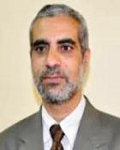
Biography:
Nasser Ibrahim Abu-El-Noor received the Ph.D. degree in Health Care Policy from the Department of Public Administration and Urban Studies at the University of Akron, Akron, Ohio, USA. Topic of dissertation: Barriers to health care and quality of life of prostate cancer survivors residing in Gaza Strip and received the Master of Nursing Administration from Marquette University, Milwaukee, Wisconsin, USA as a Fulbright Scholar. Currently, he is working as an Associate Professor at the faculty of Nursing, Islamic University of Gaza
Abstract:
Background: In Palestinian, 10% of deaths among children under the age of five are related to infections or infectious diseases. Practice of infection prevention and control reduces the number of hospital-acquired infections. The purposes of this study were to explore health care team perceptions of causes of hospital-acquired infections and to develop, implement and measure the impact of infection prevention program in the ICU of a specialty pediatric hospital in Gaza Strip.
Methods: A quasi experimental with pretest-posttest design was used. All nurses and physicians were included in this study. Five dimensions were measured and investigated pre and post-intervention. An infection control educational program was designed and implemented.
Results: After implementing the staff-developed program, the five dimensions were improved: using sharp box increased from 46.6% to 90%, doing gloves and scrubbing improved from 53.3% to 55%, frequency of hand washing increased from 47.2% to 79.3%, awareness of Palestinian protocol of infection prevention increased from 27.5 to 80% and positive swabs cultures decreased from 56% to 34.6%.
Conclusion: The study recommends rebuilding an the infection control committee, motivating and encouraging work team to apply control infection measures through training and continuous education, providing the necessary medical supplies. These are besides continuous monitoring and follow up from the administration.
Key words: Infection control, infection control standards, hospital-acquired infection, Gaza, Palestine.
- Dear Euro Nursing 2018 attendees!
We would like to inform you that 3rd Day of the conference i.e., (October 10th, 2018) is scheduled for Business to Business Meeting, Networking with Keynotes, speakers, Moderator and lunch will be provided from 12:30 -13:30.
We are very much glad to anticipate your presentation at networking and lunch session on 3rd day of the conference.
Thanks and regards,
Valentina Esther
Euro Nursing 2018
Session Introduction
Kristine Anne Scordo
Wright State University, USA
Title: Recognition and Treatment of HFrEF (Systolic) and HFpEF (Diastolic): Get with the Guidelines

Biography:
Dr. Kristine Scordo is professor and director of the Adult-gerontology Acute Care Nurse Practitioner program at Wright State University, Dayton, Ohio. She has over 30 years’ experience in cardiology and currently practices at Schuster Cardiology Associates, Dayton, Ohio. She is a nationally known speaker with multiple publications who has done multiple presentations on topics in cardiology world-wide and is the chair of the Advanced Practice Registered Nurses (APRNs) for the American College of Cardiology.
Abstract:
Diastolic heart failure, or preserved EF (ejection fraction) heart failure and systolic heart failure are two clinical subsets of the syndrome of chronic heart failure that are most commonly encountered in clinical practice. This session focuses on the recognition, treatment and prevention of heart failure, along with discussion of current guidelines and research that will assist practitioners to effectively manage these patients.
Objectives:
- Differentiate etiology between HFrEF and HFpEF
- Discuss signs and symptoms of HFrEF and HFpEF
- Discuss diagnostic findings of HFrEF and HFpEF
- Discuss treatment differences between HFrEF and HFpEF
Lily Huang Carrier
Nursing Career Consultants LLC, USA
Title: How to Promote the Leadership Role of Nursing Profession in the Client-Centered Life Care Elder Law Practice

Biography:
Lily Huang Carrier is Founder and CEO at Nursing Career Consultants LLC, USA. Previously she worked as an Office Manager also as an Elder Care Case Manager at The Law Offices of David L. Carrier P. C., USA during 2006 to 2014. She is studied in Michigan State University, USA.
Drawing upon her experience as a successful nurse entrepreneur and business mentor in both America and China, Lily Huang Carrier RN, MA, founded Nursing Career Consultants, the foremost experts in assisting Nursing companies/individuals growing their business in simple, effective and powerful ways!
Started as a med-surg nurse, Lily built a thriving post-operative care business, hosted a television program to help local businesses grow, which was broadcast across China.
Lily has been drawn to teaching and coaching all her life. She earned her Master of Arts in Education from Guangxi Normal University, where she also served on the faculty.
She embraced her visiting scholar opportunity to United States and earned her nursing degree from Michigan State University, worked in different settings of critical nursing, built a prosperous life care elder law and business law practice with her husband.
Lily’s eBook Reveals Little Used Nursing Business Generation Techniques for Sustainable Success, and serves as an invaluable how-to-guide to achieve dependable success of any sized Nursing Business. Obtain your FREE copy at NCC website: www.NursingCareerConsultants.com
In her life-changing book: Unlock! Nurse Entrepreneurs, Reclaim Your Hidden Power, Lily explores the true nature of success for nursing professionals seeking freedom, income, and respect to achieve personal and professional growth.
From practical to philosophical, Lily would like to share with you all that she has acquired along the way at:Â www. NursingCareerConsultants.com
Abstract:
Accelerating demographic changes brought on by the aging of the “Baby Boom†generation have created new leading collaborative opportunities for innovative nursing profession. Given the conservative nature of the legal, financial and medical professions, the time is ripe for nurses to take the lead in demonstrating innovative solutions to older Americans’ demands for continued autonomy and self-actualization as the reality of diminished physical and mental vigor can no longer be denied. Unlike the stereotypes ascribed to financial, legal and medical professionals, nurses occupy a unique position of trust with the older population. Since we are dealing with client’s life support system, it is us orchestrating the services necessary for continued independence.
The historic notions of patient care are no longer sufficient, given the extreme cost of that care. Integrating medical, financial and elder law solutions into traditional notions of geriatric care, in collaboration with legal and financial professionals is essential. Nurses are well-suited by inclination and temperament to assume a leadership role in this transformation, provided we have the proper plans, steps and tools.
We can be not only advocates with a strong clinical background, excellent communicators with a myriad of resources, but also, more importantly, the essential and critical leaders to optimize elder clients’ autonomy, independence and self-actualization.
Â

Biography:
Dr. Will Loeffler, Ph.D., University of Michigan, former Ford Motor Company University Endowed Chair for Statistical Studies at Eastern Michigan University, former Examiner and Criterion Writer in Manufacturing, Service, and HealthCare for first three years of the Malcolm Baldrige U.S. National Quality Award, and former hospital board trustee in three systems.
Abstract:
Utilizing the metaphor of an astronaut travelling to the dark side of the moon, the author (a heart transplant patient 4 years post-surgery) describes in detail the psychosocial processes the patient undergoes in preparing for, enduring, and recovering from a heart transplant.
Specific stages are explored for the range of coping mechanisms and reframing methods necessary to keep moving forward in a productive way amid protocols, chaos, pain, and uncertainty.
Opportunities for healthcare system improvements for care of patients are presented which can be utilized in cardiology and other settings where extended trauma is involved.
Rahel Bahru
McGill University, Canada
Title: Perceptions of nursing care to promote Self-management in chronic kidney disease

Biography:
Rahel Bahru has completed her Masters of applied science (clinical nurse specialist) in nursing at the age of 30 years from Ingram School of Nursing, McGill University. She has completed this qualitative research project as part of her nursing master’s programme and presented at nursing exploration conference in Montreal on October 2015. She is currently works at Scripps Health, San Diego, CA in cardiac catheterization lab. I have done one poster presentation and involved in other health care quality improvement projects.     Â
Abstract:
Hemodialysis patients often deal with complex lifestyle changes such as diet and fluid restrictions that may alter their physical and emotional well-being. Nurses play an important role in promoting self-management and assisting patients to cope with these changes. Purpose: To explore hemodialysis patients’ perspectives of nursing care that enables or hinders their ability to manage their illness. Methods: A qualitative descriptive design was used. Six male and three female hemodialysis patients were interviewed during their outpatient dialysis treatment at a university affiliated hospital. Result: Three major themes emerged: 1) What it means to live with chronic kidney disease 2) Managing the illness and treatment regimen, and 3) Nature of the therapeutic relationship with nurses to promote self-management. Patients’ narratives also revealed six important features of the nurse-patient relationship. Conclusion: Patients identified the nurse’s friendly demeanour and being patient-centered as care that assisted them to self-manage. These findings underscore the importance of creating a nurturing and supportive environment, and focusing on patients’ individual needs. Reflective practice may be a helpful strategy to assist the nurse to consider the interpersonal aspect of the nurse-patient relationship. The nurse’s use of motivational interviewing may help to gain the patients’ perspective and engage them in their care.
Pi-Chi Wu
Chiayi Chang Gung Memorial Hospital, Taiwan
Title: Using simulated clinical skills exams to improve nursing skills of new nurses

Biography:
Wu Pi Chi earned her Master’s Degree from Chang Jung Christian University, School of nursing in 2009. She is a nursing supervisor at Chang Gung Memorial Hospital, where she has worked for 24 years. She has a wealth of nursing experience in a wide variety of departments, including the ER, thoracic ward, emergency ICU, surgical service, rheumatology ward and NICU. She is currently supervising departmental services for maternity and pediatrics.
Abstract:
Background: In addition to the pressures facing patient care, new nurses have the ability to directly affect quality of care while adapting to new processes, environments and teamwork. Early cultivation correctness of execution expertise can enhance nursing ability and confidence while ensuring patient safety.
Objective: This study aims to understand recent clinical skills examination evaluations of new nurses.
Methods: A nursing department in southern Taiwan participated in clinical skills examinations of 87 new nurses who self-evaluated a purpose sampling, "Clinical Nursing Skills Survey Form". The 60 minute examination evaluated ten common clinical nursing skills and simulated new staff skills. This was followed by an evaluation of the analogue investigation. A total of 87 valid questionnaires out of 88 were returned. The effective response rate was 98.86%.
Results: Education levels (university: 90.8%, junior college: 9.2%), average nursing experience (68.4 days), pre-exam anxiety self-assessment level (7.92 points out of 10). A scale from 1 to 5, higher scores indicating more satisfied, test preparation satisfaction (3.28), post-test satisfaction (3.32). Evaluation of the simulated clinical skills exam overall rating score (4.18), ranging between satisfied to very satisfied, where the highest score is the examiner's evaluation (4.53), followed by the environment (4.35), self-assessment (4.28), the examination process (3.84).
Conclusion and discussion: The clinical skills examination for new staff indicates positive affirmation, between satisfied to very satisfy. Scores of high anxiety during exam preparation led to self-satisfaction after the exam. Nurses can help improve clinical skills early so new staff are familiar with the correct implementation of nursing skills to provide quality patient care.
Practical Application: New nurses with fewer clinical skills will present a lower level of self-confidence and display an affected patient care. Through simulation clinical skills examinations, clinical skills can improve readiness to learn and improve deficiencies while providing safer patient care.
Dorothy E. Normile
MCPHS University, USA
Title: Managing Chronic Pain: Can Snake Venom Provide a Safe Alternative to Opioids for Chronic Pain?

Biography:
Dorothy E. Normile is currently working at MCPHS University, USA
Abstract:
Purpose: This review of the literature was done to assess the effectiveness of using medication prepared with snake venom when compared with opioids. Problem: The opioid crisis began in the late 1990s when drug companies informed the medical community that patients would not become addicted to prescription opioid pain relievers. With this reassurance, healthcare providers began to prescribe opioids at greater rates. This consequently led to extensive diversion and misuse of these medications. It soon became apparent that these medications were undeniably addicting. The opioid overdose rates began to rise (NIH, 2018). Methodology: A search of nursing and health related databases was done. These included Academic Search Premier, Cinahl, and Google Scholar. In addition, a search of websites the Center for Disease Control and Prevention (CDC), National Institute for Health (NIH) and The Journal of Nurse for Practioners (JNP) and the Department of Health and Human Services (HHS) were also accessed. Results: The evidence indicates the use of medication made from snake venom may be an effective method of pain management without the problems associated with opioids. However, there is still much work that need to be done in this area of research. Implications: Finding a better method to manage pain without opioids may have an impact on patients, their families and healthcare providers. Keywords: opioid crisis, snake venom for pain relief, opioids analgesics and side effects of opioids.
Bonnie Parker
Marymount University, USA
Title: Health Literacy- conceptual analysis and implications for nursing practice and education

Biography:
Bonnie Parker has a DNP from Marymount University. Her clinical focus has been in the area of health literacy principally in the areas of nursing practice and education. She is currently working on establishing health literacy as a nursing diagnosis through NANDA International.
Abstract:
Health literacy is a construct used in the literature since 1974 associated with discussions of general literacy and understanding of health concepts. Since that time, health literacy has evolved into a concept that has political, social, economic, and moral implications. Yet the definition of this construct remains elusive. Psychometric tools have been developed and tested in attempts to measure health literacy and extrapolate its implication for practice and health policy. Content experts in the field of health literacy remain in disagreement while research continues to provide further insight into this complex construct. The ability to understand and measure health literacy has extensive implications for individuals, communities, healthcare systems, health policy, education and collaborative practice.
Implications of health literacy on nursing practice and education are significant. Much like universal precautions are used to avoid the spread of disease, a universal precautions approach should be used with each patient encounter regarding health literacy. Education, skills such as reading, cognitive ability and healthcare experience do not necessary correlate directly with health literacy. Health literacy can have significant implications for a patient’s ability to meet their healthcare needs.
The scope of health literacy for nursing education has a direct relationship with all professional activities. It is imperative for all nurses to have an understanding of the attributes of health literacy, how it is differentiated from patient education, as well as the implications that culture, education and previous experiences with healthcare systems can have on health literacy. Health literacy should be considered an essential component of nursing education.

Biography:
Yi-jiun Liu  is a pharmacist and work in the taipei city hospital. She like to study about something that could bring benefit to patient.
Abstract:
Object :
Diphenhydramine is a common drug and using for allergy syndrome. Diphenhydramine has some common side effect that is association with muscle disorder. Discuss that is it well to use diphenhydramine for Patient with acute dystonia .
Methods:
In order to review the English lectures about the relationship between diphenhydramine and treatment of acute dystonia ,PubMed, EBSCOhost, and the Web of Knowledge databases were searched using the following keywords " Diphenhydramine ", " treatment of Acute Dystonia", " acute dystonia" ,and "muscle disorder" .
Results
Some case reports have showed that diphenhydramine were effective in dystonia and one case report has showed that patient with acute dystonia can give intravenous diphenhydramine to relieve the syndrome. Diphenhydramine have effectiveness to patients with dystonia that was showed in some study reports  Â
Conclusion
According to result, we believe that diphenhydramine will could be useful to patients with acute dystonia. Because Some psychoactive drugs and mental disorder will induce patient to show the acute dystonia and diphenhydramine could be a good choice for those patient.
Yi-Pei liu
Taipei City Psychiatric Center, Taiwan
Title: Safety of wearing contact lenses for patients using selective serotonin reuptake inhibitors (SSRIS)

Biography:
Y-P LIU is a pharmacist at Taipei City Psychiatric Center (Taipei City Hospital Songde Branch), Taiwan.
Abstract:
Objective: Due to the frequent use of contact lenses by modern humans, and the widespread usage of SSRIs, which is considered to be one of the antidepressants used by most people, leads to increased adverse effects such as elevated intraocular pressure, uveal effusions and angle-closure glaucoma, we reviewed English lectures to assess the effect of wearing contact lenses on eye side effects associated with SSRI.
Methods: To review the English lectures of Google Scholar and PubMed, which were related to the evidence of wearing contact lenses, changing intraocular pressure, and the role of SSRIs in controlling intraocular pressure in patients with SSRIs treatment.
Results: Acute angle-closure glaucoma and elevated intraocular pressure are the most important manifestations of SSRIs associated ocular adverse events. Case reports by Andrew and others showed that any patient using paroxetine may cause angle-closure glaucoma. In addition, some literatures has reported that people wearing contact lenses have a risk of having increasing intraocular pressure, especially in the case of prolonged wearing of contact lenses, therefore contact lenses must be carefully selected.
Conclusion: Elevated intraocular pressure is an evidential cause of glaucoma. Thus, wearing contact lenses should be considered as a risk. In addition, SSRIs may have a side effect on elevating intraocular pressure. Therefore, it is worth noting that patients using SSRIs may have the same side effects when wearing contact lenses. In conclusion, patients who are advised to take SSRIs and have been in the cases of intraocular pressure elevation after taking SSRIs should be ensured the safety use of contact lenses.
Rahel Bahru
McGill University, Canada
Title: Perceptions of nursing care to promote Self-management in chronic kidney disease

Biography:
Rahel Bahru has completed her Masters of applied science (clinical nurse specialist) in nursing at the age of 30 years from Ingram School of Nursing, McGill University. She has completed this qualitative research project as part of her nursing master’s programme and presented at nursing exploration conference in Montreal on October 2015. She is currently works at Scripps Health, San Diego, CA in cardiac catheterization lab. I have done one poster presentation and involved in other health care quality improvement projects.     Â
Abstract:
Hemodialysis patients often deal with complex lifestyle changes such as diet and fluid restrictions that may alter their physical and emotional well-being. Nurses play an important role in promoting self-management and assisting patients to cope with these changes. Purpose: To explore hemodialysis patients’ perspectives of nursing care that enables or hinders their ability to manage their illness. Methods: A qualitative descriptive design was used. Six male and three female hemodialysis patients were interviewed during their outpatient dialysis treatment at a university affiliated hospital. Result: Three major themes emerged: 1) What it means to live with chronic kidney disease 2) Managing the illness and treatment regimen, and 3) Nature of the therapeutic relationship with nurses to promote self-management. Patients’ narratives also revealed six important features of the nurse-patient relationship. Conclusion: Patients identified the nurse’s friendly demeanour and being patient-centered as care that assisted them to self-manage. These findings underscore the importance of creating a nurturing and supportive environment, and focusing on patients’ individual needs. Reflective practice may be a helpful strategy to assist the nurse to consider the interpersonal aspect of the nurse-patient relationship. The nurse’s use of motivational interviewing may help to gain the patients’ perspective and engage them in their care.
Priyanka Dhiraj Salve
Maharashtra Institute of Mental Health, India
Title: Drug compliance and psychiatric patients

Biography:
Mrs. Priyanka Dhiraj Salve is M.Sc Nursing (Psychiatric Nursing) at Maharashtra Institute of Mental Health, Center of Excellence, Pune, India.
Abstract:
Statement of the Problem: “A Study To Assess The Effectiveness Of Self Instructional Module (Sim) On Knowledge And Attitude Of Medication Compliance Among The Care Takers Of Mentally Ill Patients In Selected Mental Hospitals”.
World Health organizes the importance of psychological well- being, defines “health is the state of complete physical, mental, social and spiritual well-being and not merely the absence of disease or infirmity”
According to World Health Organization, Mental Health includes “Subjective well-being, perceived self-efficacy, autonomy, competence, intergenerational dependence and self-actualization of one’s intellectual and emotional potential, among others”.
OBJECTIVE
1) To assess the Level of knowledge regarding medication compliances among care takers of mental ill patients in selected Mental Hospital, Pune.
2) To assess the attitude of medication compliance among care takers of mentally ill patients in selected Mental Hospital, Pune.
3) To assess the effectiveness of Self Instructional Module (SIM) on knowledge and attitude regarding medication compliance among care takers of mentally ill patients in selected mental hospital, Pune.
4) To find the association with study finding and selected demographic variables
Conclusion & Significance: Following study can be undertaken in relation to present study.
• A similar study may be replicated on large samples; there by findings can be generalized.
• The study can be undertaken in different settings and different target population such as identical samples.
• A comparative study can be done to assess effectiveness of two different self instructional modules
Stephanie Merck
Fairfield County Medical Group, P.C., USA
Title: Chronic disease and mobile technology: An innovative tool for clinicians

Biography:
Dr. Merck has been a nurse for over 40 years in a variety of settings including the acute hospital environment and private practice. She recently completed studies and successfully defended her dissertation for a PhD in nursing with University Of Phoenix School Of Advanced Studies. Actively employed within a suburban, multispecialty, internal medicine practice for the last 22 years, she provides direct care to all patients within this practice. Additionally, Dr. Merck regularly precepts Nurse Practitioner students, holds an adjunct faculty position at Yale School of Nursing, and facilitates courses in the undergraduate on-line nursing program at University of Phoenix. She enjoys her family, following several college sports team, and traveling.
Abstract:
The 21st century holds many challenges for primary care providers chronic disease management is one. Chronic disease and conditions are among the most common, costly and preventable of all health problems (Centers for Disease Control [CDC], 2016). The incidence of one chronic disease, diabetes, is expected to explode within the next five years. While preventions and education programs have documented improvement in outcomes, the success is difficult to maintain in daily life. Chronic illness requires different approaches and conversations.  The disease is managed and not cured. Much of the management of chronic illness occurs outside of the provider’s office and within the daily lives of those affected by the disease. Providers, who seek different strategies to support the patient’s self-management of their chronic illness, may improve outcomes. Incorporating the information provided by technology may improve self- management skills and lead to collaborative provider/patient conversations. Technology may provide the tool necessary to improve both self-management behaviors and outcomes. Primary Care Providers, who understand the daily struggles of those diagnosed with a chronic illness, can offer realistic strategies for an individual to develop the necessary self-management skills to manage their chronic disease.

Biography:
Transformational leadership is a style of leadership where a leader works with subordinates to identify needed change, creating a vision to guide the change through inspiration, and executing the change with committed members of a group. Emergency Departments are increasingly confronting challenges such as overcrowding, understaffing, increased waiting times, poor patient satisfaction and staff burnout. Transformational leadership can play a key role in revitalizing and assisting stressed Emergency Departments where resource limitations present real and consistent roadblocks to significant performance improvement, staff morale and motivation.
As a transformational leader, once must find ways to influence and change behavior. Integral to creating changes in the different issues in the Emergency Department is staff engagement. Due to patient-care demands and increasing institutional requirements, staff members are becoming increasingly overwhelmed by the amount of information they receive and initiatives with which they must comply. Traditionally, hospital leaders use a linear approach to communicate with staff. An example is a manager reads a policy to staff ,with the expectation that they will follow the requirements.
As hospitals become increasingly tactical in their approach to innovation, it is recognized that the top-down approach to performance improvement is ineffective. The most valuable asset in the workplace is the staff (Drucker, 1954). Their engagement and productivity can dictate the success of a project.
So, how do hospital leaders influence staff to engage in the hospital’s initiatives and facilitate change? Innovative marketing strategy as an innovative approach ED staff engagement utilizing marketing strategy as an innovative approach.
Marketing is the “process of creating, communicating, delivering, and exchanging offerings that have value to customers” and the target audience (American Marketing Association, 2017). The basic premise of marketing is to influence consumer behavior and drive change.
Abstract:
Janine Duran started her nursing career in 2007. Prior to that, she was working as an Account Executive in McCann Erickson World Group, a multinational advertising agency. She decided to move to the US, to pursue nursing and worked in SBH (St. Barnabas Hospital) as an ED nurse from 2008. In the last 4 years, she transitioned from charge nurse, nurse manager and ED nursing director.
She has a Master's degree in Nursing. She is a Certified Emergency Nurse, Certified Nurse Executive-Advance and also is an APN specializing in Adult and Geriatrics. She is also was the first RN to be sponsored by SBH to join the Clinical Quality Fellowship program of GYNHA and UHF, teaching and helping hand-picked physicians and nurses to lead innovative quality and patient-safety initiatives. She is a National Conference Speaker, focusing on topics such as "Transformational Leadership and " The Use of Innovative Marketing and Non-Traditional Strategies/media in the healthcare setting."
Patricia Zebrook
Florida Southwestern State College, USA
Title: Experiences moving to a concept-based curriculum in an associates of science in nursing program

Biography:
Patricia has completed her Bachelor’s degree in Nursing from the University of Wisconsin, Eau Claire and her Masters degree from the University of Alabama, Tuscaloosa.
She is a full-time faculty member at Florida Southwestern State College for the past 7 years. She has published 5 papers in reputed journals related to quality in nursing. She was involved in the development of the first and second semesters of the didactic and online Concept-based curriculum for her school of nursing.
Abstract:
Â
The educational shift from abstract theory and knowledge towards conceptual knowledge and critical reasoning led our nursing faculty to adopt the Concept-Based Curriculum approach in the fall of 2016. This presentation will describe the preparation for the change, experiences noted during a full cycle (4 semesters) of nursing education utilizing this process, and various evaluation methodologies.

Biography:
Dr Martin has been in nursing since 1974 and worked as an executive leader in home health, hospice and consulting until 2004 when she moved into higher education leadership. She has served as Dean of Nursing at four institutions and continues to teach in graduate programs for several universities. She is a frequent lecturer and workshop leader on success strategies, living a life of purpose and passion, and overcoming the challenges of the healthcare workplace. She was a contributing author to Mastering the Art of Success by Jack Canfield which was a New York Times bestseller in 2017. She is now the President of her own nursing company, The Successful Nurse where she consults with nursing programs and provides online programs for nurses. Additionally Diann is a certified Aromatherapist and Reiki Master Trainer.
Abstract:
Given the increasing complexity of care, the aging of the population, and rising costs; nursing is a challenging profession. To be successful and fulfilled, nurses need to be deliberate in identifying their intentions and passions and chart their future course with goals and actions that flow in this direction. In this workshop you will identify and prioritize your topic five ingredients for an ideal life and career and begin to design a plan to manifest these for yourself. Success strategies such as continued learning, forming a support group (tribe), practicing radical self-care and supporting others will be discussed. Success is a personally defined outcome but many people spend little to no time creating their plans.
Hank Drummond
Cross Country Healthcare, USA
Title: Considering Contingent Labor to Maintain efficiency, cost saving and patient quality

Biography:
Drummond holds the position of Chief Clinical Officer within the Cross Country Healthcare. His experience includes more than 25 years’ of directly applicable healthcare administration and a broad base of exceptional management expertise. His past leadership roles include executive and director level positions as Chief Nursing Officer, Nursing Administrator and Nurse Executive. He has also served as an University Instructor. Mr. Drummond's proficiency in balancing patient care with business efficiencies provides healthcare providers with the added benefit of an innovative approach with cutting edge technology solutions to meet the daily demands of healthcare delivery in a rapid changing environment.
He is considered an expert in his field and is often asked to speak on various topics related to Nursing labor and Quality topics to groups throughout the USA. He serves on numerous Boards and Advisory Boards giving advice and recommendations to meet the needs of patients to ensure safety.
Abstract:
The problem would be the misconceptions that a Contingent Labor Force does not delivery quality care.
1. Contingent Labor cannot deliver quality (research has shown and reported that Contingent Labor force has a positive impact on quality outcomes, patient satisfaction, staff satisfaction, family satisfaction, physician satisfaction).
2. Contingent Labor does not maintain efficiency. The results would indicate the right staff at the right bedside, at the right time, delivering the right skill set brings efficiency to the unit, the nursing department, and the organization as a whole.
3. Contingent Labor does not deliver cost savings. Again, using contingent labor brings cost savings by handling vacancies and by providing staff so units do not have to be closed, patents to do not have to be relocated/diverted to another facility, procedures do not have to be cancelled or delayed. Having the correct staffing patterns will decrease amount of turnover in staff, increase staff and physician morale.
4. Contingent Labor does not impact Patient satisfaction and quality scores. However, the right mix of staff increase quality scores and has a positive impact on outcomes and delivers measurable results.
Tawa B. Ibikunle-Salami
Indiana University Northwest School of Nursing, USA
Title: Strategies to improve parental uptake of Human Papillomavirus Vaccine

Biography:
Dr. Tawa Ibikunle-Salami completed the MSN with Family Nurse Practitioner track at age 44 years from Indiana Wesleyan University and the DNP at age 50 years from Walden University due to raising a family and working full time as a nurse to provide for her college education. Currently serving as a Clinical Assistant Professor, coordinator of a family nurse practitioner program and as director of the campus health and wellness center. Her DNP dissertation was published and as assisted in writing different policies at the hospital organizational level.
Abstract:
Human Papillomavirus (HPV) is a global health issue, transmitted sexually and affects both genders. Literature review shows approximately over 80 million people affected, in the United States with 14 million people newly affected yearly. Lack of parental education and unwillingness of provider to promote the HPV vaccine is the main criteria for the reduction in the HPV vaccine uptake. The Centers for Disease Control and Prevention (CDC) indicates that teens and younger adults under age 26 are at risk, as a result, it is significant to initiate the HPV series before sexual exposure as early as 9 years old. Multiple literature reviews indicate the importance of provider and parental education in relation to the uptake of the vaccine. The purpose of this research study was to develop evidence-based strategies that will improve the parental uptake of the HPV for children ages 9-17 years. The research goals focused on Provider education, provider means of communication, parental knowledge, beliefs, and attitudes. The HPV vaccine availability as well as the cost of the vaccine, and other available resources to the patient and their family such as clinic distance and means of transportation. The researcher will look into all available federal and global resources in ensuring the proper implementation of the identified strategies. Successful implementation of the listed goals will afford the provider and the parents the knowledge needed to improve the HPV uptake and avoid missing opportunities. Incorporation of the identified strategies into clinical practice will lead to social change by improving HPV knowledge, awareness, and increase its uptake, thereby, reducing the effects of HPV and its sequelae, leading to cost-effective care and holistic family wellness promotion.

Biography:
Dr. Mabolo completed her Doctor in Nursing Practice from American Sentinel University in Aurora, Colorado with a focus on Executive leadership and her Master’s in nursing from Duke University School of Nursing. She is currently the director of a 30 bed heart failure unit at Moses Cone Memorial Hospital, a 500 bed acute care hospital that is a part of a 6 hospital enterprise in southeastern North Carolina. She has presented numerous evidence based posters and podium presentations to various national nursing conferences including the American Nurses association, American Association of Critical Care Nurses and the North Carolina Nurses Association.
Abstract:
Description:
Indwelling Urinary catheters are commonly used for heart failure inpatients to support strict intake and output monitoring related to IV diuretic administrations.
In our 30 bed heart failure unit, high indwelling catheter utilization and high Foley days led to increased catheter acquired urinary tract infection (CAUTI). As we drilled down the problem, we identified inconsistent use of the nurse driven urinary catheter protocol and inaccurate documentation of I & O.
These triggers prompted our team to use the IOWA model to identify best practices in CAUTI prevention.
Methods/Materials:
Using the IOWA model, the team reviewed literature for best practice strategies. Baseline data on I & O documentation and catheter care practices were collected.
Staff were re-educated on the urinary catheter guidelines, proper Peri and Foley care, use of nurse driven protocol to discontinue Foley catheter and I&O documentation through daily huddle messages and one on one staff education.
Practice was changed in Intake and Output documentation of catheter output to every 4 hours; Foley/Peri care annual competency was established and the team selected a Nurse tech and a nurse to be CAUTI champions.
Results:
The unit CAUTI rate in 2013 was 3.16 with 7 CAUTI’s and 949 Foley utilization days.
After staff re-education and practice change in 2014, the CAUTI rate decreased to 1.22 with 1 CAUTI and 807 in Foley utilization days.
In 2015 the unit CAUTI rate continued to decline despite a slight increase in Foley utilization of 924 days.
By 2016, the unit continued to be CAUTI free and for 2017, they remain CAUTI free with 598 days of Foley utilization.
Conclusion:
This evidence based project positively impacted practice by promoting early removal of Foley catheters and accurate documentation of Intake and output. The results demonstrate a dramatic and consistent decrease in CAUTI rates, as well as a decrease in catheter days.
Adherence to Protocol driven care and commitment to maintaining increased staff awareness has dramatically reduced the incidence of CAUTI on this department resulting in the unit’s achievement of 3 years CAUTI free.
Elizabeth S. Guernsey
UNC Health Care, USA
Title: Organizational factors that enhance and inhibit organizational innovation

Biography:
Elizabeth S. Guernsey is a nurse educator and most recently assistant director of nursing with expertise in creating curriculum through utilization of current evidence based learning research for both large health care systems and university settings. I have been particularly successful cultivating a productive and positive learning environment for a wide diversity of learners. Most recently, she was a Nursing Supervisor and Charge Nurse in the Waterloo, Iowa area. During this time, she provided direct patient care, as well as leadership and guidance for the clinical nursing staff.
Specialties: Nursing leadership and staff development, EMR training, curriculum designs, delivery and evaluation, and education consultation.
Abstract:
Organizations that enhance innovation create a culture of ongoing staff development, learning and creativity. Learning is shared and encouraged throughout the organization. Studies have shown a direct relationship between organizational learning, innovation and enhanced business improvement (Jimenez Jimenez, 2011). In addition, research indicates that organizational learning, “allows the company to develop capabilities that enhance innovation and that innovation is what positively affects performance” (Jimenez Jimenez, 2011, p. 409).
The factors that may contribute or prohibit enhanced adoption of an innovative culture of an organization are size, age, industry and environmental instability (Jimenez Jimenez, 2011). Research indicates that larger, mature companies have greater resources and funding to support organizational learning and innovative efforts (Jimenez Jimenez, 2011). Industry variability and diverse internal cultures have been shown to impact innovation. The connection between innovation and organizational learning has been shown to impact the agility of an organization to navigate and sustain during times of turbulent environments and economic down-turns (Jimenez Jimenez, 2011). It has been found that in order to succeed, “in Schumpeterian environments organizations must be able to cope with increasing complexity and high-speed change” (Jimenez Jimenez, 2011, p. 410).
Arthur Dominguez Jr.
Sierra Vista Regional Medical Center, USA
Title: Decreasing Primary-Care-Related Emergency Department Visits in the Hispanic Population Using Patient Navigators
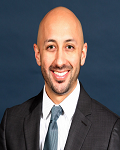
Biography:
Dr. Arthur Dominguez is a Chief Nursing Officer at Sierra Vista Regional Medical Centre, California, USA. He is previously worked as an Assistant Chief Nursing Officer at Desert Regional Medical Centre from March 2015 – September 2017. He studied Master of Science in Nursing and Doctor of Nursing Practice (DNP) at Walden University, Minnesota, USA.
Abstract:
Primary-care-related emergency department (PCR-ED) visits by Hispanic patients enrolled in a not-for-profit Medi-Cal and Medicare health plan resulted in longer wait times in the emergency department (ED) at a regional medical center in Southern California. This congestion decreased access for those with true emergencies, created capacity issues, increased ED length of stay, and resulted in potential safety risks. This project focused on decreasing PCR-ED visits in the Hispanic population using patient navigators in Southern California. Applying the health belief model and Lippitt’s theory of change, this doctoral project involved the creation and implementation of a culturally appropriate, population-specific patient navigator model for the Hispanic population. Evaluation of outcomes was accomplished using electronic health record (EHR) results, which demonstrated a reduction of PCR-ED visits and revisits. The project exceeded the goal of 10% reduction in PCR-ED visits and revisits in the target population and resulted in a 14.31% reduction of PCR-ED visits and revisits within 1 month of implementation. Emergency Severity Index levels, wait time associated with each Emergency Severity Index level, and visits of the targeted Hispanic population enrolled in the health plan were analyzed to evaluate the success of the program. This project may lead to improvements in nursing practice and positive social change by supporting population health management and continuum of care to a primary care physician through safe and efficient patient navigation to treatment and care.
Joanne Spataro
Pisa University School of Medicine, Italy
Title: Teaching the CanMEDS Communicator Role through English for Nurses: an Italian pilot course
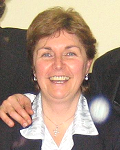
Biography:
Joanne Spataro is a Canadian EFL mother-tongue professor and teacher trainer at the University of Pisa, Italy. She started teaching Academic Writing Courses at Maryland University, USA. She is currently teaching Scientific English Courses for the resident doctors of the Medical Specialization Schools and also for the Nursing Students of the University of Pisa. Within the Medicine Department of Pisa University, her research is focused on implementing a patient-oriented communication both in the medical and nursing field by means of teaching English for Medical Purposes. This has brought her to work in several medical departments of Pisa University, integrating this type of research with the Canadian CanMeds Physician Competency Framework with particular reference to the Role of Physicians and Healthcare Professsionals as Communicators.
Abstract:
Despite wide agreement about the importance of effective communication in nursing education there is little evidence of patient-oriented communication courses in Nursing Master’s Degree programs in Italy. So, how do nurse practitioners learn to master effective communication skills? What is being done within the curriculum design for nursing students? From a pedagogical standpoint, international health communication research has helped increase health educators’ awareness, contributed to building national health policies, provided theoretically driven work, and created textbooks in nursing communication skills. Nevertheless, in Italy very little attention is given to the training of communication skills within the master degree nursing curriculum. This paper will therefore describe the outcomes of a pilot course in patient-oriented communication skills in accordance with the CanMEDS Communicator Role while teaching English for Nurses. It is the writers' belief that English for Nurses should be taught from the holistic perspective of the nursing profession and healthcare communication first and foremost, while reinforcing vocabulary acquisition, grammar and structure secondly.
Yoshifumi Nishida
National Institute of Advanced Industrial Science and Technology, Japan
Title: Adaptive Nursing by AI/IoTâ€Based Individualized Monitoring: Longitudinal Monitoring of Elderly Gait Change at Nursing Home and Ordinary Home

Biography:
Yoshifumi Nishida is a Team Leader of Living Intelligence Research Team at the Artificial Intelligence Research Center (AIRC) of the National Institute of Advanced Industrial Science and Technology (AIST) in Japan. He received a PhD from the Graduate School of Mechanical Engineering, the University of Tokyo in 1998. In 1998, he joined Intelligent System Division of Electrotechnical Laboratory at AIST of the ministry of international trade and industry (MITI), Japan. In 2001, he joined Digital Human Laboratory. In 2003, he joined the Digital Human Research Center (DHRC) of AIST. He is also a Prime Senior Research Scientist at AIST from 2013. His research interests include human behavior sensing, human behavior modeling, injury prevention engineering, and social participation support.
Abstract:
Statement of the Problem: cognitive and physical capabilities change of elderly are diversified. Such diversity in the change needs personalized support based on individualized assessment. Conventionally, sensing technology for assessment have been proposed. However, from the viewpoint of feasibility of longitudinal monitoring and easiness of operation, wearable sensors have drawbacks that users have to exchange/recharge a battery routinely and sensors embedded in living spaces also have difficulty in personal identification if multiple people live in target living space. Methodology & Theoretical Orientation: As new monitoring systems for detecting elderly gait change based on the recent Internet of Things (IoT) and artificial technology, the authors developed 1) a buttery-less shoe-shaped wearable sensor, 2) RGB-D cameras with face and posture recognition, and 3) handrail-shaped sensor as shown in Fig. 1. To evaluate effectiveness of them, we conducted experiments in a nursing home, and an ordinary home. The results of experiments using buttery-less shoe-shaped wearable sensor shows that the error of elderly location is within 1 m. The handrail-shaped sensor was evaluated for over two years in the ordinary home where a 88 years old woman lives. The results indicate that it could monitor not only longitudinal gait data but abnormal gait such as stumbling. The RGB-D technology was evaluated in the nursing home that has eight elderly adults (79 to 104 years old) and seven nursing stuffs. The error rate of person identification is within 2.9% and the error rate of walking speed is within 4.9%. Conclusion & Significance: The above experimental results indicates that the three kinds of systems are promising methods for monitoring individual elderly in actual living spaces such as a nursing home and an ordinary home in terms of easiness of operation and accuracy of data.
Lyne Chamberlain
Seminole State College’s, USA
Title: Perceived Social Support and Self-Care in Hospitalized Heart Failure Patients

Biography:
Lyne Chamberlain was a Clinical Nurse Specialist with expertise in chronic heart failure patients and a passion for facilitating self-care when this study was conceived. She has presented at numerous national conventions for the American Association of Heart Failure Nurses and the American Association of Critical-Care Nurses. Lyne has also published several articles related to heart failure self-care. Currently Dr. Chamberlain is the Program Manager and a Professor of Nursing in Central Florida’s Seminole State College’s bachelors program
Abstract:
Statement of Problem: Self-care is recommended in heart failure (HF) management and to reduce hospitalizations, yet only one study has demonstrated improved patient outcomes with adequate self-care. This study evaluated perceived social support and self-care in hospitalized HF patients compared with community dwelling HF patients.
Methodology and Theoretical Orientation: The medical outcomes study of social support (MOS-SS) and the self-care of heart failure index (SCHFI) were the key measurement instruments for this multisite descriptive study. Multiple regression and two-sample t tests for unequal variances were used to analyze the data from a convenience sample of 121 hospitalized HF patients and a comparative study of 211 community-dwelling HF patients. Theoretical frameworks were the Self-Care of HF Theory and the Stress-Buffering Model of the Social Support Theory.
Findings: Hospitalized HF patients had significantly lower self-care maintenance scores and perceived social support than community-dwelling HF patients. Perceived social support was associated only with self-care confidence, and self-care confidence was associated with self-care maintenance and self-care management. 25% of hospitalized study candidates had cognitive impairment compared with less than 6% of community-dwelling patients.
Conclusion and Significance: Community-dwelling HF patients had better self-care skills than hospitalized HF patients. Additional research is needed to determine the best strategies for improving self-care or reasonable substitutes in these patients. Additional research is also needed to evaluate cognitive impairment across the spectrum of HF patients, as this impairs self-care success.
Jacinta Margaret Anne I. Juta
University of Santo Tomas, Philippines
Title: A Structural Equation Model of Factors Influencing the Quality of Life Among Incarcerated Filipino Older Adults
Biography:
Jacinta Margaret Anne I. Juta is affiliated to College of Nursing, University of Santo Tomas, España Boulevard, Manila, Philippines
Abstract:
Statement of the Problem: Among older adults, incarceration is challenging because of their complex health and social care needs (Maschi, Viola & Morgen, 2013); inadequate social support (Asberg & Renk, 2014); diminished contact with family and friends outside (Crossman, 2017); and social isolation (Kang & Ridgway, 1996; Matt & Dean, 1993). Hence, incarcerated older adults are likely to feel lonely, jeopardizing their mental well-being and increasing self-destruction (Khorshid, Eser, Zaybak, Yapucu, Arslan & Cinar, 2004) and depression (ArslantaÅŸ, Adana, Abacigil, Kayar & Acar, 2015). Thus, with these circumstances, the quality of life (Qol) of incarcerated older adults is greatly affected. Although Qol has been well studied among the general population, Qol among incarcerated older adults remains less explored. This study aims to examine the relationships between and among factors such as social engagement, depression, loneliness and social support and quality of life of incarcerated Filipino older adults.
Methodology & Theoretical Orientation: Accordingly, this descriptive correlational study draws on the power of structural equation modelling (SEM) to analyze data from 315 purposively selected incarcerated Filipino older adults.
Findings: The emerging model suggests that social engagement directly influences depression (β= -.267, p= <.01) and social support (β= .619, p=<.01). Social support, for its part, has a direct influence on loneliness (β= -.342, p=<.01) and quality of life (β= .217, p=<.01). Further, loneliness positively influences depression (β= .416, p=<.01). Lastly, the results also showed that decreased quality of life (β= -.292, p=<.01) is more likely to occur with incarcerated older adults who are depressed.
Conclusion: This study highlights that social engagement, social support, loneliness and depression predict quality of life among incarcerated older adults. But despite being incarcerated, older adults can still achieve quality of life by strengthening social support systems and social engagement as well as decreasing levels of loneliness and depression.
Keywords: Incarcerated, older adults, Filipino, social engagement, depression, loneliness, social support, quality of lifetime
Rifat Ara Adity
Northern Arizona University, USA
Title: The effect of prior shortening on residual force enhancement after stretch

Biography:
Dr. Rifat ara Adity is Graduate Teaching Assistant at Northern Arizona University, USA. She has completed her Master's degree in Biology/Biological Sciences at Northern Arizona University, USA from 2014 – 2016
Abstract:
The mechanism of muscle contraction was first explained by the sliding filament theory However, several muscle properties are poorly explained by this theory such as: 1) enhancement of force with stretch; and 2) depression of force with shortening. Recently, a new theory of muscle contraction, the “winding filament” hypothesis, has been suggested. This hypothesis explains how titin acts in conjunction with sliding filament theory. This theory resolves many unexplained muscle properties. If activation of a passive elastic element is responsible for residual force enhancement, then shortening prior to stretch should reduce or eliminate the extra force upon stretch. Edman and others have performed experiments in which active muscles were shortened prior to stretch. However, they observed no reduction in residual force enhancement due to pre-shortening. They concluded that, if an elastic element is formed in muscle during activation, it is not slackened by shortening. Later studies showed that, as the delay between shortening and stretch increased, the effect of shortening on force enhancement decreased. The purpose of this study was to evaluate the effect of the delay between shortening and stretching on mouse muscles. Muscles were placed initially on the descending limb of the force-length relationship. The muscles were first shortened and then stretched at a fixed amplitude and speed (10% fiber length, and at 40% fiber length/s), either immediately following shortening, or 100, 200, 300, 400, or 500 ms following shortening. As the interval between shortening and stretch increased, residual force enhancement increased. The observations are consistent with the idea of a passive structural elastic element in vertebrate skeletal muscle that develops upon muscle activation. Further this element has a time-dependent mechanism that is dependent on cross bridge cycling. These findings are consistent with the predictions of the winding filament hypothesis.
Teus Brand
Academic Medical Center Amsterdam & Arbo Unie, Netherlands
Title: Scientific evidence about adverse effects of working conditions must be used in counseling before conception and during early pregnancy
Biography:
Teus Brand is an occupational physician working in The Netherlands. He developed expertise in finding and evaluating literature on the adverse effects of working conditions on pregnancy outcomes and making the information available for health professionals in every day practice. Therefore a Dutch guideline on this topic has been written in 2007 as well as a part of a publication of the Health Council of The Netherlands on preconception care. Recently the guideline has been updated. And in the new Preconception Indication List, the information on the effects of preconceptional exposure of hazardous working conditions will soon become available to health professionals involved in obstetric care such as general practitioners, midwifes, gynecologists and occupational physicians.
Abstract:
Introduction / aim: To find and use scientific evidence about the influence of working conditions on reproductive outcomes for practical use in a guideline for occupational and a website for pregnant women, parents to be, health care professionals and policy makers.
Method: We searched the literature for evidence concerning the effects of working conditions before, and during pregnancy on pregnancy outcome and development during early childhood. The working conditions with effects on pregnancy outcome were summarized in six groups: physically or mentally heavy work, shift work, chemical substances, physical factors (like noise) and infections. We looked at the following pregnancy outcomes spontaneous abortions, preterm birth, low birth weight, hypertension and congenital malformations and developmental problems at early school age.
Use of evidence: A practical guideline1 was made for occupational physicians in The Netherlands (also translated in English) and was recently updated. It can be used by physicians in advising pregnant women and women breastfeeding their child. In another report “Preconception care: a good beginning"2, the chapter about working conditions underlines the effect of exposure before conception on the embryo and fetus. In the third place the evidence was used on websites3,4 for parents to be or pregnant women and can be used for preventive measures regarding working conditions preconception ally or during pregnancy.
Conclusion: There is growing evidence that working conditions before and during pregnancy can increase the number and severity of pregnancy complications. There is also evidence that early intervention can prevent this increase of pregnancy complications. The available evidence has been used for a guideline for occupational physicians and on a website for parents to be in order to take preventive measures. A summary of the evidence will be presented together with examples how to use the evidence in counselling before conception and during early pregnancy.
Samira Obeid
The Max Stern Yezreel Valley College, Israel
Title: The social capital of Israeli Jewish and Arab nursing students

Biography:
Dr. Samira Obeid, has received her Ph.D. (2012) and MPH (2005) in public health from Haifa University specializing in Health Promotion. She obtained her first degree, BSc in Nursing, from Hadassah School of Nursing at The Hebrew University. Her research (MPH and PhD) focused on healthy and unhealthy behaviours, the social determents and the social capital of the Arab community. Areas of interest for postdoc research: 1. Social capital determents in minorities and health behaviors and indicators.2. Planning, operation and evaluation of health promotion programs among several target groups. 3. Cultural adaptation for minorities.
Abstract:
Israeli society is made up of many different groups. Jews comprise the majority population, when Arabs are the minority. In recent years, in light of political tension situations between Jews and Arabs, forms of intolerance appeared in wide range of actions from avoidance to hate speech in personal levels or via the social media among nursing students. This research aimed to evaluate the relationship between Arabs and Jews nursing students using the social capital components: social involvement, reciprocity, support and trust. High levels of social capital can facilitate coordination and cooperation for mutual benefit of the nursing students.
Methods: Quantitative study using a questionnaire based on the ESS social capital questionnaire. Self-administered online questionnaire via Google Docs software sent to all first year students via email.
Results: 228 nursing students participated in the research most of them (88%) are females, 47% Jews and 53% Arabs. The results indicate low social involvement between Arabs and Jews nursing students, students reported higher trust levels in same group students than in the other group (Arabs and Jews), high levels of reciprocity in the two groups was found and high levels of support for the same group students.
Conclusions: nursing students Arab and Jews live and learn in multicultural society. They study together for four years, and then they will work together and with people from different ethnicities and deferent cultures. It is important and efficient to educate and work with nursing students to raise their awareness for the important of coordinatio and cooperation for personal andprofessional benefits.
Puangitp Chaiphibalsarisdi
Saint Louis College, Thailand
Title: Evaluation of master nursing administration curriculum, version 2013, Saint Louis College, Thailand
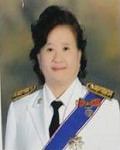
Biography:
Puangtip Chaiphibalsarisdi is Associate Professor, Chair of Master of Nursing Science Program in Nursing Administration, Faculty of Nursing, Saint Louis College, Thailand. She has completed her Ph.D. in Nursing Science AT University of Illinois at Chicago (U.I.C.), USA from Sept 1986-June 1990.
Abstract:
This mixed method research with CIPP model approach, aimed to evaluate master Nursing Administration Curriculum, version 2013, Saint Louis College, Thailand. The 33 sample were,
1) Policy administrator, program administrators, 2) nursing directors, 3) alumni, 4) teachers, 5) students’ supervisors, 6) students’ colleagues, and 7) students
There were 4 parts of measurement that validated by 3 experts for evaluating context, input, process and product.
The results of study, the administrators confirmed the policy of higher education affect the needed program, and had designed the revision program must followed the changing of service system with IT facilitate. Moreover, there is a plan for resources according to the education accreditation. For results of the input, the students satisfied the curriculum, teachers and the environment at the high levels. Especially for the field study at private and international settings. In the process from the in-depth interviews of the teachers, they reflect the variety of the thesis advisory means and methods.
The part of product, though the students perceived their professional responsibility at very good levels, but their
Supervisors and colleague expected the more competencies at 0.05 Level.
The suggestions for the revision curriculum include; 1) bilingual nursing administration curriculum and/or short terms of 1-4 months training for nursing administration, 2) the program must consistency with the changing system services, 3) supporting IT and learning facilitation, and 4) development of faculty and staff of the graduated office.
Keywords: Curriculum evaluation, nursing administration program, competency of nursing administration
Vasiliki Douglas
College of New Caledonia, Canada
Title: Building Cultural Safety through mutual respect: Examples from Indigenous populations and Institutions in Canada
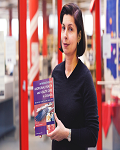
Biography:
Vasiliki Douglas has completed her undergraduate Nursing education at the University of British Columbia, undergraduate and graduate degrees in Classics and History at McGill University and a doctorate in Nursing and Anthropology at the University of Alberta. Her postdoctoral research was at the University of Northern British Columbia. She has published extensively in peer reviewed journals in Nursing, Anthropology and Arctic Studies. She is the author of the first Nursing textbook in Canada to focus on Aboriginal health and cultural safety.
Abstract:
Cultural Safety famously emerged from a cultural template informed by the physical example of Sharps Safety. Practitioners who practice Cultural Safety expect to constantly self-monitor their behaviour and attitudes to avoid creating a cultural unsafe space for patients.
However, health care practitioners must also remain cognizant of their own professional cultural space – one that is bounded by legal and professional standards. In other words, Cultural Safety cuts both ways. Some patient’s demands and requirements may be culturally mediated, but mutual cultural safety requires practitioners to create a space that both patients and practitioners can reside in without violating either cultural rules. Examples from culturally appropriate birthing centres in the Canadian Arctic can be used to construct a model in which we, as professionals can act as mediators between the health care system and patients' own cultural space – creating a common ground in which a culturally safety and professional integrity can both thrive.
Hope R. Farquharson
National University, USA
Title: Maternal characteristics and gestational weight gain patterns

Biography:
Hope Farquharson received her PhD in Nursing from the University of San Diego in 2014. She has been a registered for 32 years and has been in academia for over 15 years. She has been Director of Nursing for various nursing programs in California. Currently she is an Assistant Professor and Interim Assistant Chair/Director of the undergraduate and graduate nursing programs at National University. Her research interests include women’s Health, cancer of the cervix, colon, and breast. She works with community partners in San Diego to provide health care to vulnerable populations including the homeless, veterans, substance abusers, women, children, and people with mental health disorders.
Abstract:
Background:
Healthcare providers are critical facilitators to address the Maternal Infant Child Health (MICH-13) Healthy People 2020 objective of increasing the proportion of mothers who stay within the recommended weight gain parameters during their pregnancies1 and are tasked with developing substantial interventions to decrease the prevalence of adverse outcomes from inappropriate GWG that can lead to ill effects.2 The purpose of this study was to examine gestational weight gain (GWG) patterns among a group of racially, ethnically, economically diverse women as it related to the IOM Guidelines.
Methods
This retrospective cross-sectional study from a sample of women (N = 4,500) who gave birth between January 1, 2011 and December 31, 2012 in Northern San Diego County. There were 1,397 mothers who delivered singleton babies were assessed; 621 cases were randomly selected and 320 met the inclusion criteria. Information on maternal socio-demographic were obtained from the electronic medical record.
Results
The sample skewed towards younger women; approximately 58% were 29 years of age or less. Overall, almost half (43%) of the births were to women who identified themselves as Latina. Over 48% of women received MediCal. Seventy-one women (25%) reported Spanish as their primary language. More Latina women were receiving MediCal (p<0.001), saw a CNW rather than a physician (p<0.001), and were single (p<0.001). Across racial/ethnic categories there were no significant differences in age or weight gain. Almost half of the participants were either overweight or obese pre-pregnant. More Than two-thirds of the sample (69.1%) gained weight outside the recommend range. Pre-pregnancy BMI (Fisher’s X2 10.4; p=.03) significantly correlated to GWG within Guidelines. The association of having a certified nurse midwife and staying within Guidelines demonstrated an interesting trend toward statistical significance (p=.09). There was a trending association among those women who gained weight above the guidelines and cesarean delivery (p=0.07) and those women who gained weight Outside the guidelines had babies weighing significantly more at birth (p<0.001).
Conclusions
Women are not only not adhering to the 2009 IOM GWG recommendations but began pregnancy outside of a recommended weight with overweight (35.8%) and obese (14.4%). More studies are needed to assist in the development of better strategies to help healthcare providers motivate women to gain weight within IOM GWG guidelines.
Biography:
Aviva Alagem-Mizrahi is Registered Nurse at School of nursing, Sheba Medical Center during 1985-1989, Midwifery course at Asaf Harofe Medical Center during 1989-1990, Bachelor of Arts (BA) in health services at New England College, Master of Public Administration in healthcare at Clark University, Course in clinical teaching in nursing at Haifa University during 2000-2001 and nursing homes management course–Bar Ilan University during 2010-2012.
Abstract:
Background:
Malnutrition in the Hospitalized Patients is one of the complications that occur during hospitalization. It occurs at the rate of 30-40% in the hospitalized patients. The most important point in preventing this occurrence is to identify these patients, and the patients who are at a high risk to develop malnutrition, and to provide them with the proper nutrition needs. Their nutrition needs can be met as oral nutrition, enteral feeding tube, or through the vein parenteral nutrition. The nurse who attends the patient, and who sees and knows the patient needs, has a very important role in identifying the nutrition status of the patient, and in the treatment of the malnourished patient. From the month of May till the month of October, 2017, one hundred questionnaires were handed out to nurses, in hospital wards, in Sheba medical center. The questions in the distributed questionnaires were geared towards identifying the nurse’s knowledge and attitude in the perception of nutrition.
The Goals of the Study:
To check the attitude of the nurses to nutrition, and their involvement in the treatment of the malnourished patient .and to understand the gaps in the nurses treatment
The Way the Nurse sees her Roll in the treatment of The Malnourished Patient:
To identify the high risk patient for malnutrition, as well as the patient who is already malnourished, and to ask for consultation and proper treatment.
In order to provide the nutritional services, we need to consider the followings:
The availability of trained nurses, and the awareness of the high risk patient for malnutrition. ,Follow-up on nutrition assessment., Feeding the patient according to the availability of the attending nurse, and according to the head nurse policy.
Barriers in the nutrition treatment:
The availability of the attending nurse to do the score MUST on the first 8 hours of hospitalization .The ability to choose the right diet to the right patient, and to verify that the patient gets this meal .The different procedures and sickness during hospitalization, such as an operation, CT scan, depression, pain, stress.
Data Collected from the Questionnaires:
Female nurses – 71% , Male nurses – 29%
Nurses with academic degrees – 91%
Nurses with specialized training – 52%
Head nurses – 18%
93% of the nurses think that the MUST score is the most important ,but not pay attention to feeding, weight the patient , documenting the amount of food the patient eat ect .Only 50% of the nurses thought that pleasant environment is important to the patient when they eating.
Only 43% of the nurses thought that they should be involved in the nutrition status .Most of them can not estimate the percentage of malnourish patient .they do know the importance of food to recovery from illness
.29% of them does not feed at all, 18% feed every day, feeding can be on the 3 ways .The barriers in nutrition are connected to : knowledge attention, not talking and discussing nutrition subject.- 50%.:The need to professional person in this field such as dietitian or doctor. Stress pressure and no time to the nurse for spending in nutrition's patient.
Summery-
This survey helped me to build a program for nurses to this new year, also to think about the next research to help nurses to give the best treatment to their patient.
Clair Zawada
Birmingham City University, UK
Title: Bringing students together with Inter-Professional Learning (IPL)
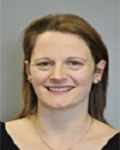
Biography:
Clair is the School Academic Lead for Curriculum Design and Development. Clair work on projects and innovations across the School of Health Sciences and the wider Faculty of Health, Education & Life Sciences. Clair teaches predominantly on the BSc (Hons) Radiotherapy programme, but also teaches sessions relating to academic and professional practice on the BSc (Hons) Diagnostic Radiography and BSc (Hons) Ultrasound programmes. The radiography disciplines are very different, but share many elements relating to patient care and professional regulation. Clair is the Personal Tutor for Radiotherapy students who are placed at New Cross Hospital in Wolverhampton, and sees them regularly to offer pastoral support and discuss their progress, both in their academic studies and in their clinical placement. Clair is involved in research, particularly the student experience, student engagement and student belonging within Higher Education and is completing her doctorate studies within this area.
Abstract:
The Faculty of Health, Education & Life Sciences recently hosted their 2nd Interprofessional Learning (IPL) conference, designed to enable students and staff to learn with and from each other. The conference runs across a nominated week, and programme teams from across the Faculty offer sessions that are delivered to students within their curriculum, but may be of interest to staff / students from other disciplines. All students and staff within the Faculty are able to register for as many sessions as they would like to attend.
The Faculty provides a wide range of courses, such as Nursing, Midwifery, Radiography, Social Work, Medical Ultrasound, Sports Sciences and Teacher Training. This enables a variety of sessions to be offered, such as ‘tackling homophobia in children’, ‘recognising and reacting to the choking child’, ‘have a go at laparoscopy’, understanding an ECG’, ‘Yoga’ and bringing down a hanging body’.
Each session is open to all within the Faculty. For students this enables interprofessional interaction and the opportunity for learning from a different perspective. Students can learn about the professional background of the session provider, and appreciate the role and expertise of different professional groups. Staff have the opportunity to network, experience different teaching sessions and gain ideas for curriculum development and inter-Faculty working.
This paper will describe the IPL conference, the logistics of organisation and how it is embedded into the timetables. Evaluations from staff and students will be discussed, as well as the lessons that have been learned and changes that will be made and taken forward.
The conference has the potential to offer students an extra-curricular learning experience and an increased sense of belonging to the wider Faculty. Students experience a diversity of backgrounds in attending the IPL conference, which increases satisfaction from the additional opportunities made available.
Kerstin Frändin
Göteborg University and Karolinska Institute, Sweden
Title: Outcome and cost-effectiveness of a community-based, individually tailored six-months physical activity intervention – a randomized, controlled, clinical trial
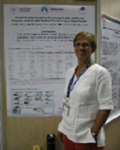
Biography:
Kerstin Frändin has her expertise in physical activity and functional performance in elderly people. She has taken an active part in the multi-professional population studies on 70-year-olds in Göteborg, Sweden, where 70-year-olds are being followed over time. She has been involved in two EU-projects on physical activity and ageing and has supervised five physiotherapists to dissertation. She has been a senior lecturer at both Göteborg University and Karolinska Institute in Stockholm. She has 48 scientific publications and is currently a senior researcher at Göteborg University.
Abstract:
Many elderly people are becoming less physically active. The aim was to describe the effects of individually tailored training advice and activities, based on physiotherapy evaluation, according to the concept “Fitness check-up”, on physical activity patterns and physical performance in inactive elderly persons, living in their private homes. A second aim was to examine the cost-effectiveness of “Fitness check-up” compared to usual care (i.e. no support to physical activity).
Fifty-seven persons over 75 years, with a low physical activity level, were randomized to either Intervention or Control Group. Endurance, balance confidence, physical activity level, social and complex daily activities and quality of life were tested before and after the six months long intervention period. Training took place in a “House-of-Health” setting. Also different kinds of social interaction, lectures and cultural activities were offered. At follow up, the IG showed significantly better results regarding endurance, activity level and falls efficacy compared to the CG. The intervention may have had an impact on health care use, but at the cost level in the study it was not effective.
Conclusion: The results of the study suggest that “Fitness check-up” connected to a House of Health setting can support elderly inactive persons to exercise regularly, leading to improved physical performance but also to the benefits of a social and intellectual meeting point. Best design, considering costs and whether the participation should be time-limited or continuous, remains to be studied.
Beverley Brathwaite
University of Hertfordshire, UK
Title: The British Black Caribbean nurse: Postcolonial race, gender and power

Biography:
I have 30 years’ experience as a registered nurse and educator with a strong commitment to quality and excellence in teaching and learning in healthcare, clinical practice, and higher education, with the aim of improving standards of care. I have experience of working with learners across a broad range of programmes and prioritising a sound learning environment in the classroom for student nurses. Currently my personal development focuses on research and completing my PhD. My experience in researching encompasses: flipped classroom, Rubric formulation/use, module assessment, skype use in tutorial support and academic tutorial support use. The focal point of my PhD is the experiences of British born black Caribbean female nurses occupational identity. Diversity in nursing is an international phenomenon and my research in this area has been of benefit to my department, my own development, and ultimately in the future student nurses of diverse ethnicities and ultimately patient care.
Abstract:
‘A post-colonial perspective challenges idea of there being a universal standpoint on knowledge development. It provides a window for understanding how concepts of ‘race’, notions of racialized ‘Other’ constructed within a particular historical and colonial context’ (Anderson & McCann 2002). The colonised existed as a primary means of defining the coloniser and of creating a sense of omnipotent unity. However, this relationship is not simply a binary them (white colonisers) and us the black colonised. There are divergent power relations between white women and men and for discussion here, women who identify themselves based on skin colour, culture, nation, country of birth and a nurse.
The ongoing narrative from post-colonial feminists (Anderson, 2002, Anderson et al 2003, McGibbon et al 2013) seek to use post-colonial theory to highlight ‘white privilege and racism in the nursing profession’. (McGibbon et al 2013). Encapsulating the complexities of the colonial relationships. This addresses the lack of attention to ‘marginalised’ groups such as the female British born Caribbean nurses (BBCN). The present location of the BBCN is still one based on colonial, gendered and radicalised beliefs. A powerful nexus of white dominance, supremacy and modern constructs of race that subsists in the female dominated nursing profession and its most important employer the British National Health service. There is a less powerful ‘Other’ assumption of Caribbean women’s gender and racialized identity, within society and as a nurse.
My paper will exam how the intersection of gender, race and class are inexplicably linked to colonial history and power structures than engendered the female black ‘Other’. How it resonates today in the differing forms of gendered racial discrimination, stereotyping and institutional racism that exists for female BBCNs and how this impacts on navigation through their careers in the National health service.
Johnson JM
University of Calgary, Qatar
Title: Interprofessional team collaboration and decision-making for patients who are aphasic: What does it look like?

Biography:
Jessie Johnson is RN, PhD and her research expertise involves looking at inter-professional teamwork and care and management of persons with chronic disease as well as inter-professional teamwork and the care and maintenance of palliative persons.
Sarah Westgate OT has a special interest in senior’s health with a focus on client-centred care within interprofessional teams.
Abstract:
Statement of the problem An implication for an individual with impaired communication skills is an assumption by health care team members regarding the capacity to make decisions. This assumption might lead to a restriction in the patient’s participation in the decision-making process. Two primary impairments that might affect the ability to participate in decision-making are aphasia and cognitive deficits. Although decision-making capacity might be present in persons with aphasia, there appears to be limitations and a person with aphasia’s ability to participate in the process within the healthcare team is impaired. Medical decision-making is complex and requires a reciprocal dialogue. Health care team members must be familiar with and open to communicating with an individual in a manner appropriate to the adult’s skills and abilities, including alternate methods of communication to complement written words. Methodology and Theoretical orientation This work began with a review of the literature and was built upon using a constructionist framework. Conclusion and Significance This narrative review will attempt to outline the difficulties with participating in decision-making when a person is unable to verbally provide consent. It will also describe ways to assess executive function in the capacity to make decisions, highlight the importance of family in the decision-making process, look at ways to encourage decision-making when there is no family present and lastly, elucidate the necessity for a continued interprofessional collaborative approach to care for patients who have aphasia.
Sukhbeer Kaur Darsin Singh
Universiti Malaysia Sabah, Malaysia
Title: The Effect of Nurse Led Education among Coronary Patients’ Towards Acute Coronary Syndrome (ACS) symptoms
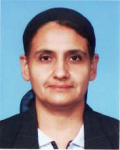
Biography:
My name is Sukhbeer Kaur. I am from Kuala Lumpur, Malaysia. Currently I am the Nursing Lecturer for the Department of Nursing, Faculty of Medicine and Health Sciences, Universiti Malaysia Sabah, Malaysia. I have obtained my basic nursing training at University Hospital Kuala Lumpur from 1990 to1993, post basic in Coronary Care Nursing (CCN) in 1999. In 2006, I graduated in Bachelor of Nursing Sciences (Hons) majoring in teaching from the Faculty of Medicine Universiti Malaya, followed by Master’s in Nursing Sciences from University Malaya too. My area of research interest is in cardiac and critical care. My publication on Nurse –Led Education on Knowledge, Attitude and Belief towards acute coronary syndrome was recently accepted for online publication at Nursing in Critical Care journal (BACCN) in 2016.
Abstract:
Problem statement: Coronary heart disease (CHD) has emerged as a number one killer in Malaysia and globally. Much of the morbidity and mortality in Acute Coronary Syndrome (ACS) patients is due to the delay in recognizing their symptoms which contributes to delay in seeking in early treatment. Decision delay and symptom interpretation is influenced by individual knowledge, attitude and belief about ACS. Purpose: This study evaluates the responses of knowledge, attitude and belief towards the ACS symptoms and the association with the patient’s clinical history. Methods: A quasi non-equivalent pre and post-test design took place in one of the tertiary hospital Malaysia. A total of 60 coronary patients were recruited in this study. Knowledge, attitude and belief responses about ACS were measured using the ACS Response Index questionnaires. The responses were evaluated at baseline and post 1 month period after the education intervention. Results: The total knowledge, attitude and belief scores increased from baseline to 1 month post intervention with a significance difference of (p<0.05) with knowledge (p=0.034), attitude (p=0.000) and belief (p=0.009). The difference in the total attitude scores were independently associated with patient’s clinical history of have gone for open heart surgery (p =0.049), diabetes mellitus (p=0.018) and involvement in cardiologist care (p=0.002). Total belief scores were independently associated have done angioplasty with stent (p=0.026) and have gone for open heart surgery (p=0.024). Total knowledge scores were independently associated with diabetes mellitus (p=0.037). Conclusions and relevance: Nurse led education have imparted positive outcome in recognizing the ACS symptoms among coronary patients. Therefore, decision in delaying symptom interpretation is improved
Key words: Acute Coronary Syndrome (ACS), knowledge, attitude and belief.
UÄŸur Cavlak
Pamukkale University, Turkey
Title: Risk factors related falling and management in older adults

Biography:
I am a former tenured professor at Pamukkale University, School of Physical Therapy and Rehabilitation, Denizli, Turkey. I graduated from Hacettepe University in 1989. I also finished my Master Degree (1992) and PhD studies (1996) in Hacettepe University. I directed the School of Physical Therapy and Rehabilitation at Pamukkale University (2001-2016). I teach research in physical therapy, neurorehabilitation, community based rehabilitation, and geriatric rehabilitation. I have the best paper in stroke rehabilitation award in a Congress organized by Turkish Physical Therapy Association, 1992, Ankara – Turkey. I have been selected Erasmus Academic Minister-2016 by The European Association of ERASMUS Coordinators (EAEC) in Thessaloniki, Greece, 2016. I have trained numerous PhD. students, now gainfully employed in academia, and handled a number of successful tenure cases as Department Head.
Abstract:
The world is aging very fast. Aging is not a disease or disability, even though significant numbers of the elderly suffer from disabilities. There are multiple chronic diseases that may be associated with aging. Older people frequently fall. This is a serious public health problem, with a substantial impact on health and healthcare costs. A fall can be defined as a sudden, unintentional change in position causing an individual to land at a lower level, on an object, the floor, or the ground, other than as a consequence of sudden onset of paralysis, epileptic seizure, or overwhelming external force. Risk factors of falling include the following (in general):
Intrinsic factors: • Effects of aging on gait, balance, and strength
• Acute medical conditions & chronic diseases
• Inactivity
• Behavioral symptoms and unsafe behaviors
• Medication side effects
Extrinsic fall risk factors: • Environmental hazards
• Unsafe equipment
• Unsafe personal care items
Examples of specific extrinsic risk factors: • Poor lighting
• Cluttered living space & Uneven floors, wet areas
• Unstable furniture
• Improper footwear
• Hard-to-manage clothing
The speech objectives are instructed to knowledge risk factor related falling and its management in care of older people. This speech offers topics in geriatric rehabilitation, especially the principles of falls management. At the conclusion of the speech, the audiences would understand issues related to the common problems seeing in geriatric population, especially gait and balance problems and falls, and a point of view of a physiotherapist and apply this knowledge to an interdisciplinary approach to older people care.
Collette Kirwan
National University of Ireland, Ireland
Title: Who should screen for IPV in antenatal care setting? Findings from an Irish based case study

Biography:
Collette Kirwan currently completing PhD on Factors that influence implementation and managing universal screening for intimate partner violence in antenatal care setting through National University of Ireland, Galway. Experience working in nursing and clinical research and in the development sector on HIV/Aids, Gender and primary health case. Current working as research associate with the Clinical Research Facility, National University of Ireland, Galway (NUIG) Ireland.
Abstract:
Violence against women is a fundamental violation of human rights and a serious international public health problem, that has irrevocable physical, psychological and sexual cost to women, their family and society in general (WHO, 2013). IPV, affecting up to 1 in 3 women (35%) (WHO, 2017) occurs across a lifespan and can start as soon as a person starts having intimate relationships (Niolon et al., 2017). Incidence of new cases and severity of pre-existing abuse has been found to increase up to 30% during pregnancy (HSE, 2011). Antenatal care is seen an opportunity to enquire routinely about intimate partner violence, because of the dual vulnerability of pregnancy (WHO, 2013).
Routine enquiry for IPV in antenatal care, currently advocated by national policy on domestic, sexual and gender-based violence in the Republic of Ireland, involves asking everywoman accessing antenatal care about their safety with their partner and in their home. As part of a case study exploring the factors that influence IPV screening in antenatal care, interviews were conducted with women accessing antenatal care services (40 persons) and healthcare professionals providing care (30 persons) in three maternity hospitals in Republic of Ireland. The aim of this presentation is to present the finding from these interviews on the preferred role, approach and characteristics of the healthcare professional to screen for IPV as part of antenatal care.

Biography:
A practicing physician in the field of healthcare in the state of Kerala in India for the last 29 years and very much interested in basic research. My interest is spread across the fever , inflammation and back pain,. I am a writer. I already printed and published nine books in these subjects. I wrote hundreds of articles in various magazines.
After scientific studies we have developed 8000 affirmative cross checking questions. It can explain all queries related with fever
Abstract:
According to the facts of physics, if temperature increases, thermal expansion of an object is positive it will expand and with decrease of temperature it will shrink. Pressure will increase due to increase of temperature.
On the contrary, during fever we can see blood vessels and skin are shrunk, pressure decreases, body shivers, sleep increases, motion decreases, inflammation increases, body pain increases, blood circulation decreases, dislike cold substances etc...
In fever, the firing rate of Warm sensitive neurons decreases, and the firing rate of
Cold sensitive neurons increases.
At the same time if we apply hotness from outside by thermal bag or if we drink hot water, our body acts according to the Facts of Physics- increase of temperature pressure will also increase, expands blood vessels and skin, body sweats, motion will increase , inflammation will decrease , body pain will decrease, blood circulation will increase, like cold substances etc..
During fever, why our body acts against Facts of Physics? when disease increases, pressure and temperature will decrease. Blood circulation will decrease due to decrease of pressure. If the essential temperature of the body is going out, essential temperature and pressure will further decrease. This will further endanger the life or action of organ.
when disease increase, it is the sensible and discreet action of brain that tends to act against facts of physics to sustain life or protect organ .There is no way other than this for a sensible and discreet brain to protect the life or organ.
We will get a clear answer if we find out the purpose of fever, sensible and discreet action of brain . No medical books clarify this1
During fever, if the temperature of fever is not a surplus temperature or if it is not suppose to be eliminated from the body, the shrinking of skin and blood vessels, shivering of body, dislike towards cold substances etc are a protective covering of the body to increase blood circulation to important organs of the body it is against the facts of physics.
Ling Tong
Zhejiang University School of Medicine, China
Title: Relationship between meaningful work and job performance in nurses
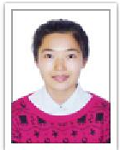
Biography:
Tong Ling has her expertise in nursing administration in improving the quality of nursing care. She was a first researcher to research meaningful work in nurses in China. She is trying to create training courses of meaningful work in clinical nurses in China
Abstract:
Aims: The present study was designed to determine the relationship between meaningful work and job performance,and the impact of meaningful work on nursing care quality. Background: Meaningful work has been suggested as a significant factor affecting job performance, but the relationship has never been studied in nurses in China.Design: A descriptive correlational study was designed to assess the level of meaningful work, tasks, and contextual performance as well as their relationships.Methods: We used a stratified random-sampling approach to enrol nurses from hospitals. Multivariate regression analysis was applied to determine the relationship between meaningful work and their demographic data. Results: There were significant, positive relationships between meaningful work and task performance and contextual performance. Education level, work unit, and employment type influenced meaningful work. The work motivation score of the nurses was lower than that of the other 2 dimensions, and a negative work motivation score negatively influenced job performance.
Conclusion: Improving meaningful work and providing more support and assistance can improve nurse performance, thereby improving the quality of nursing care.

Biography:
A practicing physician in the field of healthcare in the state of Kerala in India for the last 29 years and very much interested in basic research. My interest is spread across the fever , inflammation and back pain,. I am a writer. I already printed and published nine books in these subjects. I wrote hundreds of articles in various magazines.
After scientific studies we have developed 8000 affirmative cross checking questions. It can explain all queries related with fever
Abstract:
When the disease becomes threat to life or organs blood circulation decreases, Temperature of fever will emerges to increase prevailing blood circulation. And it acts as a protective covering of the body to sustain life.
When blood flow decrease to brain, the patient becomes fainted-delirious .If we try to decreases temperature of fever, the blood circulation will further reduced. Blood circulation never increases without temperature increase. Delirious can never be cured without increase in blood circulation.
The temperature of fever is not a surplus temperature or it is not to be eliminated from the body. During fever, our body temperature increases like a brooding hen`s increased body temperature.
The actual treatment to fever is to increase blood circulation. Two ways to increase blood circulation. 1. Never allow body temperature to lose 2. Apply heat from outside to the body. When the temperature produced by body due to fever and heat which we applied on the body combines together, the blood circulation increases.
Then body will stop to produce heat to increase blood circulation. And body will get extra heat from outside without any usage of energy.
How can we prove that the temperature of fever is to increase blood circulation?
If we ask any type of question related to fever by assuming that the temperature of fever is to increase blood circulation we will get a clear answer. If avoid or evade from this definition we will never get proper answer to even a single question
If we do any type of treatment by assuming that the temperature of fever is to increase blood circulation , the body will accept, at the same time body will resist whatever treatment to decrease blood circulation.
No further evidence is required to prove the temperature of fever is to increase blood circulation.
Panel Presentation on Diabetes and Vulnerable Populations (Time: 12:05-13:05)
Session Introduction
Carol Moffett
Arizona State University College of Nursing and Health Innovation, USA
Title: Perinatal Outcomes Associated with Fetal Sex and Screening Glucose Concentrations Measured Prior to 24 Weeks Gestation; Significant Effect with Girl Fetus

Biography:
Carol Moffertt has completed his PhD in 2007 from University of Arizona and postdoctoral work at National Institutes of Diabetes Digestive and Kidney Diseases. She is clinical faculty at Arizona State University. She is a fellow in the American Association of Nurse Practitioners.
Abstract:
This study identifies the relationship of fetal sex and early pregnancy (prior to 24 weeks gestation) screening using the oral glucose challenge test (OGCT) on four adverse pregnancy outcomes birth weight and the diagnoses of large for gestational age (LGA), cesarean delivery and pre-elcampsia/eclampsia in 2537 pregnant women. Women who delivered singleton births at Phoenix Indian Medical Center during 2000-2012 were identified from the electronic health record.
Boy babies represented 52% (n=1316) of the births. Linear and logistic regression models were used to describe the impact of the OGCT on the four adverse pregnancy outcomes. Associations of 1 hour plasma glucose (1hPG) with each clinical outcome were calculated for girl and boy babies. Odds ratios were calculated for the logistic models and increase in birth weight for the linear model for each 1 SD increase in 1hPG. The implications for girl and boy babies were also described.
We found that the pregnant women in this study who were Native Americans were obese (mean BMI=30.5 ±7.2 kg/m2) and at high risk for type 2 diabetes mellitus (T2DM) but had not been diagnosed prior to pregnancy. Average time of OGCT administration was 12.5± 4.7 weeks gestation and had mean OGCT plasma glucose values of 117.2±32.4 mg/dl. Maternal age was 25.5±5.6 years. We identified a significant interaction of pregnancies with girl fetuses and maternal glucose on adverse outcomes in all models except cesarean deliveries. Identifying hyperglycemia very early in pregnancy offers the opportunity to intervene and possibly affect better outcomes in these pregnancies.
Charlotte Thrall
Arizona State University, College of Nursing and Health Innovation, USA
Title: Implementation of Culturally Competent Educational Interventions for Adult Latinos with Type 2 Diabetes

Biography:
Charlotte Thrall completed her Doctor of Nursing Practice degree at Arizona State University (ASU). She is Clinical Assistant Professor and Family Nurse Practitioner Specialty Coordinator at ASU.
Abstract:
This project implemented a culturally modified diabetes education program to improve self-management and clinical outcomes of Latinos with Type 2 Diabetes.
Latinos, the fastest growing minority in the United States, are among the most affected populations by the diabetes epidemic. Disease intervention strategies focused on the unique factors of lifestyle, cultural beliefs, socioeconomic status, and access to health care, while presenting information in a manner congruent with the Latino culture. Chronic disease self-management is key in improving disease outcomes, and there is strong evidence in the literature supporting the benefits of culturally competent interventions to improve disease outcomes and self-management within Latino populations.
A pre and post study design utilizing the RE-AIM framework was used to obtain comparison data regarding outcomes of culturally competent interventions of Latino adults with Type 2 Diabetes, who were ages 18 through 64 years, could read and understand Spanish, and had a baseline glycosylated hemoglobin of 8.0% or higher (n=12). The Stanford Model for the Spanish Diabetes Self-management Program was adopted in Arizona by the Department of Health and Human Services, and was used for the educational intervention. Six weekly sessions, 2.5 hours each in length, were facilitated by 2 Community Health Workers (CHWs), one or both of whom have diabetes themselves. All sessions were presented in Spanish without translators, were highly interactive, and included selected family and friends.
Outcome data includes BMI, HbA1c, and patient satisfaction.
Project results align with literature, including decreases in HbA1c, while reflecting barriers to program implementation among this population. With understanding of possible barriers, Advanced Practice Nurses can utilize this educational intervention to improve diabetic patient outcomes in the Latino community.
Judith Ochieng
Arizona State University, College of Nursing and Health Innovation, USA
Title: Risk perception of developing diabetes complications among African American Women with type 2 diabetes

Biography:
Judith Ochieng has completed her PhD and DNP from The University of Arizona in 2015. She is Assistant clinical professor at Arizona State University teaching in DNP program. Judith is also practicing as a Family Nurse Practitioner as a contractor for the department of homeland security in Arizona.
Abstract:
This study describes the perceptions that African American (AA) women diagnosed with Type 2 diabetes mellitus (T2DM) have of their risks of developing DM complications and how their perceived risk of diabetes complications influences their diabetes (DM) self-management,
A qualitative descriptive study was used to provide a comprehensive description of the perception of risk for developing DM complications among AA women with T2DM. A purposive sample of ten (n =10) AA women with T2DM participated in the study.
Findings revealed that knowledge of T2DM influences the perception of risk of developing T2DM complications. The findings also revealed that risk perception for developing DM complications influenced DM self-management among AA women with T2DM. AA who perceived themselves to be at high risk reported taking appropriate actions to prevent or delay the onset of developing T2DM complications.
Results showed that risk perception is an important factor in DM self- management. Therefore, understanding risk perception of AA women with T2DM is a key to changing their health behavior and reducing their health risks related to T2DM. Understanding the attitudes and beliefs of AA women with T2DM regarding their risks for developing diabetes complications is a powerful tool for practitioner especially primary care providers who mange DM. Providers can use this information to provide individualized care that would help improve health outcomes and reduce health disparities among this population.
Sessions:
Nursing Education | Nursing Practice and Research | Types of Nursing | Family Nursing | Midwifery and Women Health Nursing | Nursing Care | Heart and Cardiovascular Nursing | Medicine | Emergency Nursing and Critical Care
Session Introduction
Marie T. O’Toole
Rutgers University, USA
Title: The language of health care
Time : 09:50-10:10

Biography:
There is no doubt that the language of health care is nuanced and can confuse as well as inform if one is not familiar with these nuances. Health care vocabularies fall into the category of a specialized language also known as a language for special purposes (LSP). Recently lexicographers are using a new term, Academic and Professional Languages. This new term refers to the type of language used by specific knowledge communities or groups of professionals, and the language of nursing best falls within this category. Academic and Professional Languages (APL) include the common language, or language that is used in all types of communication, but specific terms, or lexemes, from the common- or general language- often have a specialized meaning in an APL. There are also terms that are in a grey area between the general language and the APL that are used in both, with different meanings depending on context. Neither the broader language of health care, nor the language specific to the nursing profession, is unique as a scientific vocabulary. A large number of words in academic and professional language are derived from Latin and Greek but scientific language is supplemented by new words added as the science evolves and research adds to the body of knowledge. This presentation will highlight the language of healthcare used to describe innovations and advances in nursing and healthcare as represented in contemporary health care dictionaries.
Abstract:
Dr. Marie O’Toole’s primary program of research is academic lexicography. Dr. O'Toole has served as the editor of multiple editions of dictionaries and encyclopedias, including the award winning Mosby Dictionary of Medicine, Nursing and Health Professions. She continues to edit the Mosby series of dictionaries.
Dr. O’Toole has been involved in international outreach related to rehabilitation and curriculum development. Her work has been funded by the United States Agency for International Development (USAID), the Health Resource Services Administration (HRSA), the Fund for Improvement of Secondary Education (FIPSE) program of the United States Department of Education and the Erasmus+ program of the European Commission on Higher Education. In 2017 she served as a Fulbright Specialist in Jordan.
Dr. O’Toole is deeply committed to excellence in nursing education. Throughout her career she has been proactive in looking for sustainable opportunities to advance nursing education in an international, interdisciplinary and collaborative fashion. She was the Founding Chair of Nurses Overseas, a division of Health Volunteers Overseas (HVO). The nursing division provides an opportunity for nurse faculty to work with their colleagues in developing countries. Dr. O’Toole is a member of the 2003 Robert Wood Johnson Executive Nurse Fellow cohort. Her Fellow project focused on supporting transcultural expertise in undergraduate students. While serving as the Chair of Nazareth College her faculty received the Innovation Award for the establishment of a dual degree program with two schools in the European Union. She currently serves, with great pride, as the Senior Associate Dean at Rutgers, Camden School of Nursing.
In recognition of her work, Dr. O’Toole has garnered numerous awards including an honorary doctorate from Semmelweis University in Budapest, Hungary, the presidential “Call to Service Award” from the G.W. Bush Administration, and Fellowship in the American Academy of Nursing.
Susan Solecki
Drexel University, USA
Title: An exploratory study on parental monitoring of adolescent cell phone use
Time : 10:10-10:30

Biography:
Susan Solecki, Dr PH, MSN, FNP-BC, PPCNP-BC is an assistant clinical professor at Drexel University. Dr. Solecki is board certified as both a family and pediatric nurse practitioner by the American Nurses Credentialing Center (ANCC). Dr. Solecki has thirty-five years of varied experience as a clinician, mentor, and preceptor in the areas of pediatrics, women's health, adult health, and occupational health. Dr. Solecki maintains current clinical practice at an outpatient pediatric office in Philadelphia. Dr. Solecki has attained her doctorate in the DrPH Program in the School of Public Health at Drexel University with her research focusing on violence in the adolescent population.
Abstract:
Research shows that exposure to violence in the media contributes to “aggressive behavior, desensitization to violence, nightmares, and fear of being harmed” in children (American Academy of Pediatrics [AAP], 2001, p.1222). The accessibility and magnitude of variable electronic device usage adds to a growing concern for potential harm for children from media exposure (Solecki, McLaughlin, and Goldschmidt, 2014). The education of parents to monitor and limit cell phone use may be a protective mechanism for their adolescents. The purpose of this study is to better understand parents’ knowledge and attitudes toward online safety, the self-reported parental monitoring behaviors of adolescent cell phone use, and identify any gaps in parental knowledge related to risk reduction associated with media exposure by adolescents. This study also explores how the parent-adolescent relationship influences the monitoring process and its outcomes. This qualitative study included 20 semi-structured interviews of parents who discussed their monitoring experiences related to their adolescents’ cell phone use. This study’s findings indicate many parents’ lack of understanding, technical skills, and participation with their children’s online lives are creating a disconnection between parents and their technologically savvy teenagers. The findings identify psychosocial determinants of health that are barriers to parental knowledge of reducing risk associated with adolescent’s media exposure. Finally, this study’s findings illustrate that the monitoring process and the outcomes of the monitoring process are influenced by the parent-adolescent relationship.
Salpy Akaragian
Armenian International Medical Fund, USA
Title: Innovative Health Care Project - Cochlear Implants and Bone- Anchored Hearing Aid Surgeries in Armenia
Time : 10:45-11:05

Biography:
Salpy Akaragian completed her PhD from University of California, Los Angeles. She is the Founder and President of Armenian International Medial Fund and Former director of UCLA Health’s International Nursing Program and Nurse Credentialing. She has published, received many local, national and international awards. She is served on the California Board of Registered Nursing as a board member and was a Magnet appraiser for American Nurse Credentialing Committee. In June 2018, after 44 years of Nursing Career, Salpy retired from UCLA Health. She continuous conducting international research and projects, and serves as a consulted to the Ministry of Health of Armenia.
Abstract:
The Armenian International Medical (AIM) Fund was founded in 2003 as a critical component of the master plan to advance health care in Armenia. Its mission is to create and implement innovative health care programs for the Armenian people. In 2004, AIM Fund launched its cochlear implant program and sent its inaugural team of medical, nursing and support staff to implant a four-year-old child--the first surgery of its kind on Armenian soil. The organization’s success is due to a group of dedicated and highly skilled Medical, Nursing and other Health Care Professionals. The medical team is led by Dr. Akira Ishiyama, a professor and otologist surgeon from David Geffen UCLA Medical School and Ronald Reagan UCLA Medical Center in Head and Neck and, Dr. Arthur Shukuryan, professor and Director of Head & Neck at Erebouni Medical Center. The team is also supported by highly skilled anesthesiologists, audiologists, nurses, device programmers, speech therapists and other health care professionals. Today, over 100 children and young adults have been implanted and four children have received Bone-Anchored Hearing Aid (BAHA) device. The success rate of the surgeries has been 100%. The recipients of the device are now able to hear, speak, learn and attend regular schools. Armenia is on the map as the cochlear implant Regional Center in the Caucasus. This presentation will highlight the key elements and infrastructure of the project, stake holders, financial implications and, share with you challenges and opportunities of the project.
Theresa M. Fay-Hillier
Drexel University, USA
Title: Emergency Department Nurses Experiences with Screening for IPV: Implications for Nursing Education
Time : 11:05-11:25

Biography:
Dr. Fay-Hillier earned her Doctorate in Public Health from Drexel University's School of Public Health, her Master's Degree in Psychiatric Mental Health Nursing from the University of Pennsylvania and a Bachelor of Science in Nursing from Holy Family University. She is a board certified Clinical Nurse Specialist in Psychiatric and Mental Health Nursing by the American Nurses Credentialing Center. She was a co-leader of a homicide bereavement group for families at the City of Philadelphia Office of the Medical Examiner. She has presented at both national and international conferences on issues related to Intimate Partner Violence, harm-reduction strategies in addressing individuals addicted to opioids, and implementation of collaborate simulation experiences into nursing programs. Dr. Fay-Hillier has also co-authored several peer reviewed articles and is co-editor of a textbook on Child Maltreatment (a 2015 publication).She traveled to Bolivia to provide consultation and education to judges, prosecutors and forensic psychologists to enhance the evaluation of sexually assaulted children and teens and to explore strategies for successful prosecution of the offenders. Dr. Fay-Hillier's focus of research in obtaining her DrPH from Drexel University's School of Public Health was related to health care providers' experiences in addressing IPV.
Abstract:
Although health care providers are encouraged to screen for intimate partner violence (IPV), most studies have indicated that routine screening does not consistently occur. In the United States, 20 people per minute are victims of IPV. Women who are victims of violence have a 50% higher rate of using the ED services and up to a 21% higher rate of primary and specialty care visits than patients without a history of IPV. A study that explored the connection between women who were murdered by an intimate partner and previous contact with the health care system, identified that out of the 34 homicide victims, 44% of those women had encounters with health care providers in the ED. The purpose of this qualitative study was to explore the experiences, views, and perceptions of RNs working in the ED with regard to screening for IPV. Most of the nurses indicated a lack of clinical preparedness through their formal educational experiences, or through hospital in-services, in address screening for IPV. This presentation will focus on how the experiences shared by the RNs in screening for IPV were incorporated into the development of assessing and addressing victims in a nursing education curriculum as well as the implications for nurses’ to be involved in the development of policies implemented in the ED which focus on addressing victims.

Biography:
Ann V. Thiel-Barrett, DNP, RN, FNP-BC, CNE
Dr. Thiel-Barrett is an Assistant Clinical Professor at Drexel University. She is board certified as a Family Nurse Practitioner by American Nurses Credentialing Center and is also certified as a Nurse Educator by the National League for Nursing. Besides having a clinical background as a Pediatric Nurse and a Family Nurse Practitioner, she has thirty years of teaching experience.
Her expertise lies in the area of nursing education and curriculum development. Dr. Thiel-Barrett's doctoral work focused on the effects of simulation on student learning. She has presented nationally on the use of simulation in nursing education. In addition, Dr. Thiel-Barrett coordinated and assisted in the development of the Collaborative Simulation Experience at Drexel University incorporating holistic concepts from several clinical courses. Recognized for her contributions to nursing education, Dr. Thiel-Barrett is the recipient several Drexel University, College of Nursing recognition awards and most recently the Daisy Faculty Award.
Theresa Fay-Hillier, DrPH, MSN, PMHCNS-BC
Dr. Fay-Hillier earned her Doctorate in Public Health from Drexel University's School of Public Health, her Master's Degree in Psychiatric Mental Health Nursing from the University of Pennsylvania and a Bachelor of Science in Nursing from Holy Family University. She is a board certified Clinical Nurse Specialist in Psychiatric and Mental Health Nursing by the American Nurses Credentialing Center. She was a co-leader of a homicide bereavement group for families at the City of Philadelphia Office of the Medical Examiner. She has presented at both national and international conferences on issues related to Intimate Partner Violence, harm-reduction strategies in addressing individuals addicted to opioids, and implementation of collaborate simulation experiences into nursing programs. Dr. Fay-Hillier has also co-authored several peer-reviewed articles and is co-editor of a textbook on Child Maltreatment (a 2015 publication). She traveled to Bolivia to provide consultation and education to judges, prosecutors and forensic psychologists to enhance the evaluation of sexually assaulted children and teens and to explore strategies for successful prosecution of the offenders. Dr. Fay-Hillier's focus of research in obtaining her DrPH from Drexel University's School of Public Health was related to health care providers' experiences in addressing IPV.
Abstract:
Approximately 20 people per minute are victims of intimate partner violence (IPV). Transgender individuals are at risk for being victims of IPV with some surveys identifying a 35% lifetime prevalence rate of being victims of IPV. Even though health care providers are encouraged to screen, most studies identify routine screening does not consistently occur. A simulation experience was developed to provide nursing students with an opportunity to increase their knowledge and comfort with addressing IPV in diverse populations. In addition, this experience offered nursing students the beginning skills needed for screening vulnerable populations who are victims of abuse.
Richard Ogden
RORR Inc., USA
Title: HIV/AIDS: A Review of Current Treatment, Prevention and Cure Research
Time : 11:45-12:05

Biography:
Richard Ogden received his training in organic chemistry at Cambridge and, following postdoctoral research at UC San Diego was a founding scientist at Agouron Pharmaceuticals where he worked on discovery and development of new therapies for cancer and HIV/AIDS, notably Nelfinavir, a HIV protease inhibitor. Following acquisition by Pfizer, he led their global medical education effort in HIV and represented their research at several international venues including the WHO and the Presidential Advisory Council on HIV AIDS in the USA. He is a co-founder, with Dr Regina Rooney of RORR Inc, a scientific and medical consultancy. Clients have included small companies conducting research and development in infectious disease and the International AIDS Society.
Abstract:
The impact of HIV/AIDS continues to affect tens of millions of individuals worldwide. Affordable and relatively tolerable treatment options are available in an increasing area of the developed and developing world. As a consequence, prevention, including that of mother to child transmission, and the management of an ageing infected population is a major focus of the research and treatment community. It is still the case that individuals who successfully suppress viral replication experience a shorter life expectancy and greater incidence of morbidity including frailty, cardiovascular disease and end stage liver disease, especially in the case of co-infection with Hepatitis.
This talk will review the current state of art in treatment, prevention and the management of co-infection for those affected. New drugs in development are still needed to combat the continuing emergence of drug resistance and the prospect of a vaccine or of a ‘cure’ are still very much in the realm of basic research. These latter topics will also be reviewed.
Cathy Rodgers Ward
UCLA Medical Center, USA
Title: Innovation in Nursing Leadership: Individual Accountability of the Nurse as a Sustainable Approach to Quality Outcomes
Time : 13:45-14:05

Biography:
Cathy Rodgers Ward, PhD, RN, NEA-BC is an experienced nurse executive and researcher and was most recently the Chief Nursing Officer for the past 18 years at the UCLA Medical Center in Los Angeles, California, designated three times as a Magnet facility. Dr. Ward also holds an appointment as clinical faculty in the UCLA School of Nursing. Her research has focused on the effects of nursing leadership on patient outcomes in hospitalized patients. Under Dr. Ward’s direction, UCLA achieved high patient satisfaction with overall quality of care ranking above the 90th percentile nationally and nurse satisfaction ranked above the 95th percentile. Dr. Ward has received many awards including the 2017 UCLA Leadership Award, 2015 Distinguished Alumni Award from the University of Alabama in Birmingham, the 2015 Transformational Leadership Award at UCLA, and the United States 2011 Nurseweek National Management Nurse of the Year.
Abstract:
Statement of the Problem: Nursing management programs to improve nurse performance as measured by patient outcomes such as patient satisfaction or quality outcomes have proven difficult to sustain. Many quality programs are implemented only to have temporary gains in patient outcomes. This study describes a nursing leadership approach involving feedback to the individual nurse regarding their own patient’s outcomes, therefore engaging the nurse at a personal level for motivation to sustain outcomes. Methodology and Theoretical Orientation: Motivation theory and professional practice models guide the theoretical orientation to this research. This study was conducted in a large academic medical center with >1700 nurses receiving their own scorecards on their performance related to patient satisfaction and patient safety. Special emphasis was placed on positive nurse communication as a driver of patient satisfaction. Patient responses on patient satisfaction questionnaires were matched using medical record numbers with the nurse caring for them in the hospital using the nurse assigned to them each shift as documented in the electronic medical record. Analytics software was utilized to prepare the data for each unit manager to share with their staff. Findings: Nurse Communication scores have increased to 89% and have been sustained since the implementation of the “Always Report”. Nurses have responded positively to receiving feedback on their performance and unit leaders have responded positively to the use of the report as a feedback tool for coaching and motivating nurses. The number of nurses on the “Always Report” continues to increase each quarter. Conclusions and Significance: Providing nurses with individual feedback on their performance contributes to sustained outcomes. The implementation of a positive, proactive approach to feedback on nurse performance contributes to positive patient outcomes.
Aviva Alagem Mizrahi
Sheba Medical Center, Israel
Title: Nurses knowledge and attitude in the perception of nutrition
Time : 14:05-14:25
Biography:
Aviva Alagem Mizrahi is Registered Nurse at School of Nursing, Sheba Medical Center during 1985-1989; Midwifery course at Asaf Harofe Medical Center during 1989-1990; Bachelor of Arts (BA) in Health Services at New England College and; Master of Public Administration in Healthcare at Clark University. She has done course in clinical teaching in nursing at Haifa University during 2000-2001 and nursing homes management course at Bar Ilan University during 2010-2012.
Abstract:
Malnutrition in the hospitalized patients is one of the complications that occur during hospitalization. It occurs at the rate of 30-40% in the hospitalized patients. The most important point in preventing this occurrence is to identify these patients, and the patients who are at a high risk to develop malnutrition, and to provide them with the proper nutrition needs. Their nutrition needs can be met as oral nutrition, enteral feeding tube, or through the vein parenteral nutrition. The nurse who attends the patient, and who sees and knows the patient needs, has a very important role in identifying the nutrition status of the patient, and in the treatment of the malnourished patient. From the month of May till the month of October, 2017, 100 questionnaires were handed out to nurses, in hospital wards, in Sheba Medical Center. The questions in the distributed questionnaires were geared towards identifying the nurse’s knowledge and attitude in the perception of nutrition. Aim of the study is to check the attitude of the nurses to nutrition, and their involvement in the treatment of the malnourished patient and to understand the gaps in the nurses’ treatment. Role of nurse in the treatment of malnourished patient includes: identify the high risk patient for malnutrition, as well as the patient who is already malnourished, and to ask for consultation and proper treatment. In order to provide the nutritional services, we need to consider the followings: The availability of trained nurses, and the awareness of the high risk patient for malnutrition and follow-up on nutrition assessment, feeding the patient according to the availability of the attending nurse, and according to the head nurse policy. Barriers in the nutrition treatment includes: The availability of attending nurse to do the score MUST on the first 8 hours of hospitalization; the ability to choose the right diet to the right patient, and to verify that the patient gets this meal and; the different procedures and sickness during hospitalization, such as an operation, CT scan, depression, pain, stress. Data collected from the questionnaires: female nurses – 71%, male nurses – 29%, nurses with academic degrees – 91%, nurses with specialized training – 52% and, head nurses – 18%. 93% of the nurses think that the MUST score is the most important, but do not pay attention to feeding, weight the patient, documenting the amount of food the patient eat. Only 50% of the nurses thought that pleasant environment is important to the patient when they eat. Only 43% of the nurses thought that they should be involved in the nutrition status. Most of them can not estimate the percentage of malnourish patient. They do know the importance of food to recovery from illness. 29% of them does not feed at all, 18% feed every day, feeding can be on the three ways. The barriers in nutrition are connected to: knowledge attention, not talking and discussing nutrition subject. There is need of professional person in this field such as dietitian or doctor.
Stephanie Merck
University of Phoenix, USA
Title: Chronic disease and mobile technology: an innovative tool for clinicians

Biography:
Stephanie Merck has been a Nurse for over 40 years in a variety of settings including the acute hospital environment and private practice. She recently completed studies and successfully defended her dissertation for a PhD in Nursing at University of Phoenix, School of Advanced Studies. Actively employed within a suburban, multispecialty, internal medicine practice for the last 22 years, she provides direct care to all patients within this practice. Additionally, she regularly precepts Nurse Practitioner students, holds an Adjunct Faculty position at Yale School of Nursing and facilitates courses in the undergraduate on-line Nursing program at University of Phoenix.
Abstract:
The 21st century holds many challenges for primary care providers chronic disease management is one. Chronic disease and conditions are among the most common, costly and preventable of all health problems. The incidence of one chronic disease, diabetes, is expected to explode within the next five years. While preventions and education programs have documented improvement in outcomes, the success is difficult to maintain in daily life. Chronic illness requires different approaches and conversations. The disease is managed and not cured. Much of the management of chronic illness occurs outside of the provider’s office and within the daily lives of those affected by the disease. Providers, who seek different strategies to support the patient’s self-management of their chronic illness, may improve outcomes. Incorporating the information provided by technology may improve self- management skills and lead to collaborative provider/patient conversations. Technology may provide the tool necessary to improve both self-management behaviors and outcomes. Primary care providers, who understand the daily struggles of those diagnosed with a chronic illness, can offer realistic strategies for an individual to develop the necessary self-management skills to manage their chronic disease.
Donna M. Romyn
Athabasca University, Canada
Title: Safeguarding evidence-informed nursing practice from predatory publishers
Time : 14:45-15:05

Biography:
Dr. Donna M. Romyn is the Associate Vice President Research and Associate Professor in the Faculty of Health Disciplines at Athabasca University. She is a Registered Nurse (RN) and holds a PhD in Nursing from the University of Alberta. Her research interests include the philosophic underpinnings of nursing education and practice, practice readiness of newly graduated nurses, and the transition of new graduates and internationally educated nurses to the highly complex nursing practice roles that exist in the Canadian healthcare system.
Abstract:
The imperative to make research findings accessible via publication in open access journals has given rise to an unintended consequence – the proliferation of deceptive and predatory publishers in virtually every discipline, including nursing. The consequences of falling prey to the deceitful nad fraudulent practices of predatory publishers can be far reaching, including the loss of sound research findings that simply vanish with the abrupt demise of the predatory journals in which they were published.
Yet, despite the profoundly negative consequences of this growing phenomenon, there has been relatively little discussion of it in the nursing literature. One possible explanation for this is naivety: nurse scholars either are not aware of the issue or do not believe it is (or could be) a problem in nursing. A more troubling explanation is that they may believe they are too clever to be lured by the overtures of predatory publishers. The latter may not be true.
Strategies for guarding against the allure of predatory publishers will be highlighted in this presentation. Caution is essential, if nursing is to protect itself from this emerging threat and sustain a culture of sound, evidence-informed nursing education and practice. Doing so demands that nurse educators and scholars learn how to guard against inadvertently giving credence to predatory journals as a result of having naively been drawn into their editorial, peer-review and publication processes. They may not be able to stop the proliferation of predatory publishers but they can learn to resist their allure.
Isabel Alvarez
Autonomous University of Barcelona, Spain
Title: Analysing the communication through metaphors between nurse and patients
Time : 15:05-15:25
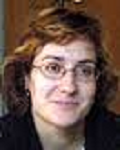
Biography:
Isabel Alvarez is an Associate Professor at Autonomous University of Barcelona, Spain. Isabel Alvarz has completed her PhD at the age of 28 years from University of Barcelona. She has several papers in reputed. Her interests are in helping to understand the communication between health professionals and patients by providing tools for that communication.
Abstract:
This study incorporated a theoretical framework based on four worldviews, each with an underlying foundational metaphor (root metaphor). The use of these root metaphors (formism, mechanism, contextualism, and organicism) can have an explanatory function and serve to impart new meanings, as each type of metaphor can lead to a particular interpretation. The study aimed to extract and discuss the root metaphors, with a view to analyzing the communication between health professionals and patients.
Methods
In a case study in Spain over a six-month period, we analyzed the content of recorded, transcribed interviews conducted by one nurse with 32 patients who had chronic illnesses. We inductively extracted five categories that emerged from the interviews: blood sugar, cholesterol, exercise, blood pressure, and diet.
Results
The results show that the nurse tended to primarily use two worldviews: mechanism and formism. In contrast, patients tended to favor mechanism when discussing cholesterol, blood pressure, and blood sugar levels, whereas contextualism was predominant when the category was diet or exercise.
Conclusions
This study adds to the existing literature on health professionals and patients’ communication. It shows how the use of Pepper’s root metaphors help to analyze the communication between the nurse and patients. Furthermore, it shows they are both using different root metaphors when they are talking about illness and treatments especially regarding blood sugar, cholesterol, exercise, blood pressure, and diet. Further qualitative and quantitative studies are needed to solidly these findings.
Yoshifumi Nishida & Kazuya Takahashi
National Institute of Advanced Industrial Science and Technology, Japan
Title: Adaptive nursing by AI/IoT based individualized monitoring: longitudinal monitoring of elderly gait change at nursing home and ordinary home

Biography:
Yoshifumi Nishida is a Team Leader of Living Intelligence Research Team at the Artificial Intelligence Research Center (AIRC) at the National Institute of Advanced Industrial Science and Technology (AIST) in Japan. He has completed his PhD in the Graduate School of Mechanical Engineering at the University of Tokyo in 1998. In 1998, he joined Intelligent System Division of Electro technical Laboratory at AIST of the Ministry of International Trade and Industry (MITI), Japan. In 2001, he joined Digital Human Laboratory. In 2003, he joined the Digital Human Research Center (DHRC) of AIST. He is also a Prime Senior Research Scientist at AIST from 2013. His research interests include human behavior sensing, human behavior modeling, injury prevention engineering and social participation support.
Abstract:
Statement of the Problem: Cognitive and physical capabilities changes of elderly are diversified. Such diversity in the change needs personalized support based on individualized assessment. Conventionally, sensing technology for assessment has been proposed. However, from the viewpoint of feasibility of longitudinal monitoring and easiness of operation, wearable sensors have drawbacks that users have to exchange/recharge a battery routinely and sensors embedded in living spaces also have difficulty in personal identification if multiple people live in target living space. Methodology & Theoretical Orientation: As new monitoring systems for detecting elderly gait change based on the recent Internet of Things (IoT) and artificial technology, the authors developed 1) a battery-less shoe-shaped wearable sensor, 2) RGB-D cameras with face and posture recognition, and 3) handrail-shaped sensor as shown in Fig. 1. To evaluate effectiveness of them, we conducted experiments in a nursing home, and an ordinary home. The results of experiments using battery-less shoe-shaped wearable sensor show that the error of elderly location is within 1 m. The handrail-shaped sensor was evaluated for over two years in the ordinary home where an 88 years old woman lives. The results indicate that it could monitor not only longitudinal gait data but abnormal gait such as stumbling. The RGB-D technology was evaluated in the nursing home that has eight elderly adults (79 to 104 years old) and seven nursing stuffs. The error rate of person identification is within 2.9% and the error rate of walking speed is within 4.9%. Conclusion & Significance: The above experimental results indicates that the three kinds of systems are promising methods for monitoring individual elderly in actual living spaces such as a nursing home and an ordinary home in terms of easiness of operation and accuracy of data. This research is partially supported by the project commissioned from the New Energy and Industrial Technology Development Organization (NEDO).
Kerstin Frandin
Goteborg University, Sweden
Title: Outcome and cost-effectiveness of a community-based, individually tailored six-month physical activity intervention-a randomized, controlled and clinical trial
Time : 16:00-16:20
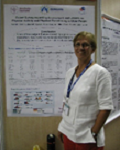
Biography:
Kerstin Frandin has her expertise in physical activity and functional performance in elderly people. She has taken an active part in the multi-professional population studies on 70-year-olds in Goteborg, Sweden, where 70-year-olds are being followed over time. She has been involved in two EU-projects on physical activity and ageing and has supervised five physiotherapists to dissertation. She has been a Senior Lecturer at both Goteborg University and Karolinska Institute in Stockholm. She has 48 scientific publications and is currently a Senior Researcher at Goteborg University.
Abstract:
Many elderly people are becoming less physically active. The aim was to describe the effects of individually tailored training advice and activities, based on physiotherapy evaluation, according to the concept “Fitness check-up”, on physical activity patterns and physical performance in inactive elderly persons, living in their private homes. A second aim was to examine the cost-effectiveness of “Fitness check-up” compared to usual care (i.e. no support to physical activity). Fifty-seven persons over 75 years, with a low physical activity level, were randomized to either intervention or control group. Endurance, balance confidence, physical activity level, social and complex daily activities and quality of life were tested before and after the six months long intervention period. Training took place in a “House-of-Health” setting. Also different kinds of social interaction, lectures and cultural activities were offered. At follow up, the IG showed significantly better results regarding endurance, activity level and fall efficacy compared to the CG. The intervention may have had an impact on health care use, but at the cost level in the study, it was not effective. The results of the study suggest that “fitness check-up” connected to a house of health setting can support elderly inactive persons to exercise regularly, leading to improved physical performance but also to the benefits of a social and intellectual meeting point. Best design, considering costs and whether the participation should be time-limited or continuous, remains to be studied.
Johnson J M
University of Calgary, Qatar
Title: Interprofessional team collaboration and decision-making for patients who are aphasic:
Biography:
Johnson J M has her research expertise involved in looking at inter-professional teamwork and care and management of persons with chronic disease as well as inter-professional teamwork and the care and maintenance of palliative persons.
Abstract:
An implication for an individual with impaired communication skills is an assumption by health care team members regarding the capacity to make decisions. This assumption might lead to a restriction in the patient’s participation in the decision-making process. Two primary impairments that might affect the ability to participate in decision-making are aphasia and cognitive deficits. Although decision-making capacity might be present in persons with aphasia, there appears to be limitations and a person with aphasia’s ability to participate in the process within the healthcare team is impaired. Medical decision-making is complex and requires a reciprocal dialogue. Health care team members must be familiar with and open to communicating with an individual in a manner appropriate to the adult’s skills and abilities, including alternate methods of communication to complement written words. This work began with a review of the literature and was built upon using a constructionist framework. This narrative review will attempt to outline the difficulties with participating in decision-making when a person is unable to verbally provide consent. It will also describe ways to assess executive function in the capacity to make decisions, highlight the importance of family in the decision-making process, look at ways to encourage decision-making when there is no family present and lastly, elucidate the necessity for a continued interprofessional collaborative approach to care for patients who have aphasia.
Fusun Terzioglu
Atilim University, Turkey
Title: Effect of home care service on the sexual satisfaction of patients with gynecologic cancer
Time : 16:40-17:00

Biography:
Fusun Terzioglu has completed her Graduation at Hacettepe University in 1989. She won the Ä°hsan Dogramacı Superior Merit Award and Science Incentive Award. She studied about counseling on assisted reproductive techniques at Liverpool Women’s Hospital Reproductive Medicine Unit in United Kingdom on the British Council Research Scholarship. She earned a certificate in management and leadership in nursing. She is an active member of Thematic Network leadership work group. She studied as a Research Scholar at Kent State University College of Nursing in 2006 for 3 months. In 2007, she worked on a project named “Development of Leadership Skills in Nursing Doctoral Students” at University of Michigan, Faculty of Nursing on an international research scholarship which was supported by International Network for Doctoral Education in Nursing (INDEN) and Sigma Theta Tau and provided to only three people around the world every year. She worked as a Research Assistant at Hacettepe University, School of Nursing in the Maternity and Women's Health Nursing Division from 1990 to 1997. She was promoted to Assistant Professor in 1998, Associate Professor in 2006 and Professor in 2012. She worked as a Co-Head of Nursing Department, Erasmus Department Coordinator, Head of Strategic Planning Group and Board Member of Hacettepe University Women’s Research and Implementation Center (HUWRICH) between 2009 and 2011. Her interest subjects are sexuality and reproductive health and management and leadership. She is Member of national and international nurse’s organizations such as INDEN and Sigma Theta Tau. She has been working as a Director of Nursing Services at Hacettepe University Hospitals from 2012-2016 and Founding Dean of Faculty of Nursing. She has published more than 70 papers, 15 grant projects, eight books as an Editor and Author and more than 100 presentations in the national and international congress. She is also an Invited Speaker for more than 60 congress and symposium. She has working as a Dean Faculty of Health Science and Director of Nursing of MLP Care in Istinye University.
Abstract:
The purpose of this study was to investigate the effect of home care service on the sexual satisfaction of patients with gynecologic cancer. Sexual health and sexual satisfaction was greatly affected in patients with gynecological cancer depending on the disease and its treatments. Prospective randomized case control study. This study was conducted with 70 patients, of whom 35 patients were in the intervention and 35 patients were in the control group. Data were collected using an interview questionnaire, home visit monitoring questionnaire and Golombok Rust inventory of sexual satisfaction. The intervention group patients were provided with the nursing care service through hospital and home visits (1st and 12th weeks) within the framework of a specifically developed nursing care plans. The control group was monitored without any intervention through the hospital routine protocols (1st and 12th weeks). Data were evaluated using Chi square test, McNemar’s, independent t test and one-way ANOVA tests. It was found that, within the 12-week post-discharge monitoring period as compared with the time before treatment, patients within the intervention group (those receiving home care services) experienced fewer sexual problems as compared to the control group (patients not receiving home care services). This study found home care services to be efficient in improving the sexual health and sexual satisfaction of patients with gynecological cancer.
Workshop (Time: 17:00-18:00)
Session Introduction
Marilee A Nowgesic & Lea Bill
Canadian Indigenous Nurses Association, Canada
Title: Cultural safety: Is it ok to be Indigenous?

Biography:
Marilee A Nowgesic is Executive Director at Canadian Indigenous Nurses Association, Canada. Her formal postsecondary education was obtained from Lakehead University and Carleton University. Additionally, she studied music with the Royal Conservatory of Music, and obtained achievements in Violin, Guitar and Music Theory. She has worked with several clients in the federal, provincial, territorial government and numerous Indigenous and non-government and private sector agencies to develop social marketing campaigns, communication strategies, education programs and policy development guidelines for Indigenous communities across Canada. It was from these experiences that an overarching and recurring theme in her work presented itself. Since that time, she has designed a workshop/seminar series that develops and provides awareness and positive understanding of the traditional knowledge, cultural protocols and current issues of Indigenous people to the mainstream population. Additionally, she has created a similar series for both the Indigenous and non-Indigenous population with a focus on youth development aimed at providing future leaders with the skills necessary for informed decisions and empowerment
Lea Bill is a Registered Nurse is Cree. She originates from the Pelican Lake First Nation in Saskatchewan and currently is the Research and Oversight Engagement Manager Project at Alberta First Nations Information Governance Center. She served as a BOD for Aboriginal Nurses Association from 1990 -1994 and as President from 1994-1999. Lea as a Traditional practitioner applies an integrated approach to her practice combining her Indigenous knowledge with her nursing knowledge, bio energy sciences and the research field. Lea Bill has been leading people in native spiritual discovery processes for more than 25 years through ceremony, vision quests and teaching the beauty and the wisdom of indigenous technology specifically the use and application of circle knowledge and natures wisdom. With more than 30 years of experience working in the health field in Community Health, and Home Care Lea continues to advocate for health equity for First Nation Inuit and Metes peoples. Her nursing career has provided the opportunity to work in many First Nation communities including the NWT at the local and the national level.
Abstract:
This presentation will look at some of the issues the Canadian indigenous nurses association (CINA) and the Canadian association of school of nursing (CASN) addressing cultural competence and cultural safety. CINA is aiming to introduce Indigenous nursing curriculum as mandatory part of the Canadian nursing program curricula. This curriculum modification would be presented to all nursing students (Indigenous and non-Indigenous). These changes will include the integration of a mandatory course during the first year of nursing programs, which will allow students to mobilize their knowledge into their nursing practicum. To be inclusive of all indigenous participants, an interactive collaborative and interdisciplinary activity of all health care providers working in health care and health services delivery. The workshop will be divided into four parts: introduction, the method, the deliverables and the discussion. The first part, time will be provided for an historical interactive understanding of indigenous populations. The second part will be the effects of newcomers on indigenous health and populations. The third part will be on the effects of chronic disease, interventions and preventions. Finally, the last part will be on the demographics of the preceding three areas. Groups will be able to provide input and a wish list of how indigenous health may have looked with our current knowledge and tools and how the laws that were governing are exist and how they impact the health of our indigenous peoples. Participants will have asked, with the assistance of post-it notes, to place where they see their priorities based on the indigenous specific social determinants of health. On a subsequent exercise, they will have the opportunity to identify the barriers preventing the social determinants of health to be addressed as priorities. Participants will be able to bring home a USB key, containing information of historical and contemporary priorities and other indigenous health platforms from CINA. Participants will be able to have knowledge exchange and partnership engagement. They will also be able to participate as external stakeholders of CINA. Participants will also get a greater sense of the importance of sovereign Nations and impacts on current legislation. Participants will also be given opportunities discuss current trends or issues relatives the indigenous peoples (e.g. United Nations response to address gender-based violence, the role of the Senate of Canada in addressing indigenous issues). This area will have generated various levels of conversation based on academics, demographics, social impacts, alternative approaches and areas for research development. The discussion will be based upon the Government of Canada ability to address the Truth and Reconciliation Commission’s Calls to Action and to provide a status report those Calls to Action and the meaningful participation on indigenous peoples. The discussion will also be based upon the articles within UNDRIP and will also respond to the United Nations permanent forum on indigenous issues. As most recently, the discussion will also involve the recent report by the United Nation’s Human Rights office of the High Commissioner. That will look at new measures to target gender-based violence, especially against indigenous women.
